Few palettes feel as fresh, adaptable, and visually stimulating as a black-and-white scheme. In the nursery, this timeless duo does more than look chic: high-contrast elements nurture early visual development, gender neutrality opens decorating freedom, and swapping accents lets the room evolve without a full overhaul. Below you’ll find twenty focused ideas—each one practical, budget-flexible, and ready to mix-and-match—proving that a monochrome nursery can be anything but monotonous. Let’s dive in and turn bold contrast into everyday calm and curiosity.
1. Striking High-Contrast Accent Wall
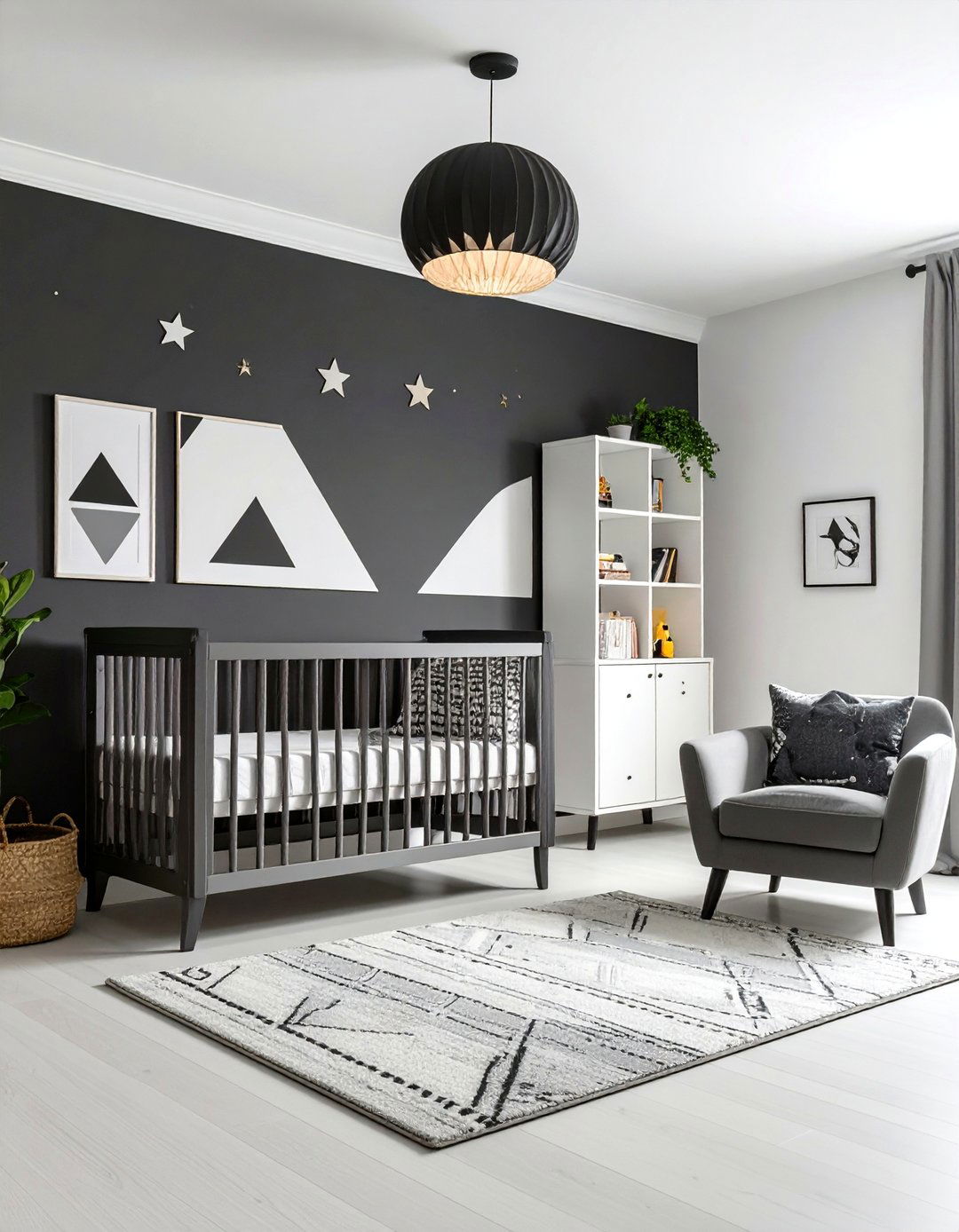
A striking high-contrast accent wall instantly sets the tone of a black and white nursery. Painting one side of the room charcoal or applying removable wallpaper with bold geometric shapes gives your baby something engaging to focus on during tummy time, because infants recognize sharp value differences long before they perceive muted pastels. Layering the remaining walls in crisp white preserves brightness, and the limited palette keeps small spaces from feeling busy. Finish the feature with slim picture rails so artwork can be rotated as your child grows, preventing nail holes and encouraging seasonal refreshes. Choose washable, low-VOC paints to make cleanup and air quality maintenance simple for exhausted parents.
2. Scandinavian-Style Nursery Furniture
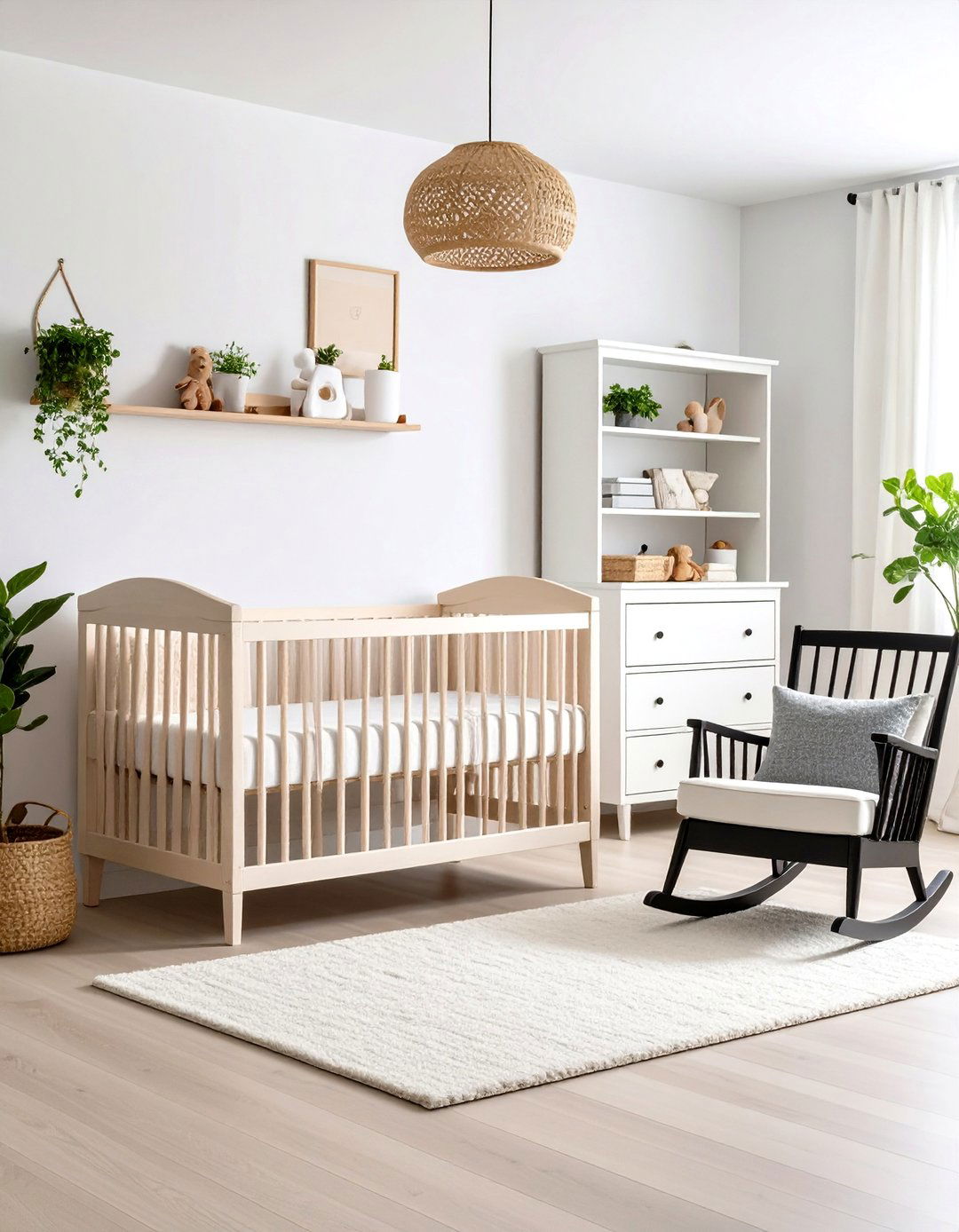
Consider furnishing the nursery with clean Scandinavian silhouettes—think pale wood frames, tapered legs, and matte-black hardware—for a modern look that never overwhelms. Natural timber softens the stark palette and offers subtle warmth, while whitewashed dressers amplify reflected light in smaller rooms. Look for convertible cribs and changer-tops that evolve into toddler beds and storage consoles, extending usefulness well past infancy. Keeping surfaces uncluttered echoes Scandinavian minimalism, making late-night feedings safer by removing tripping hazards. Add one black spindle chair or rocker to ground the scene; the contrast reads intentional rather than accidental and lets future pops of color shine whenever you’re ready to introduce them.
3. Graphic Animal Print Gallery
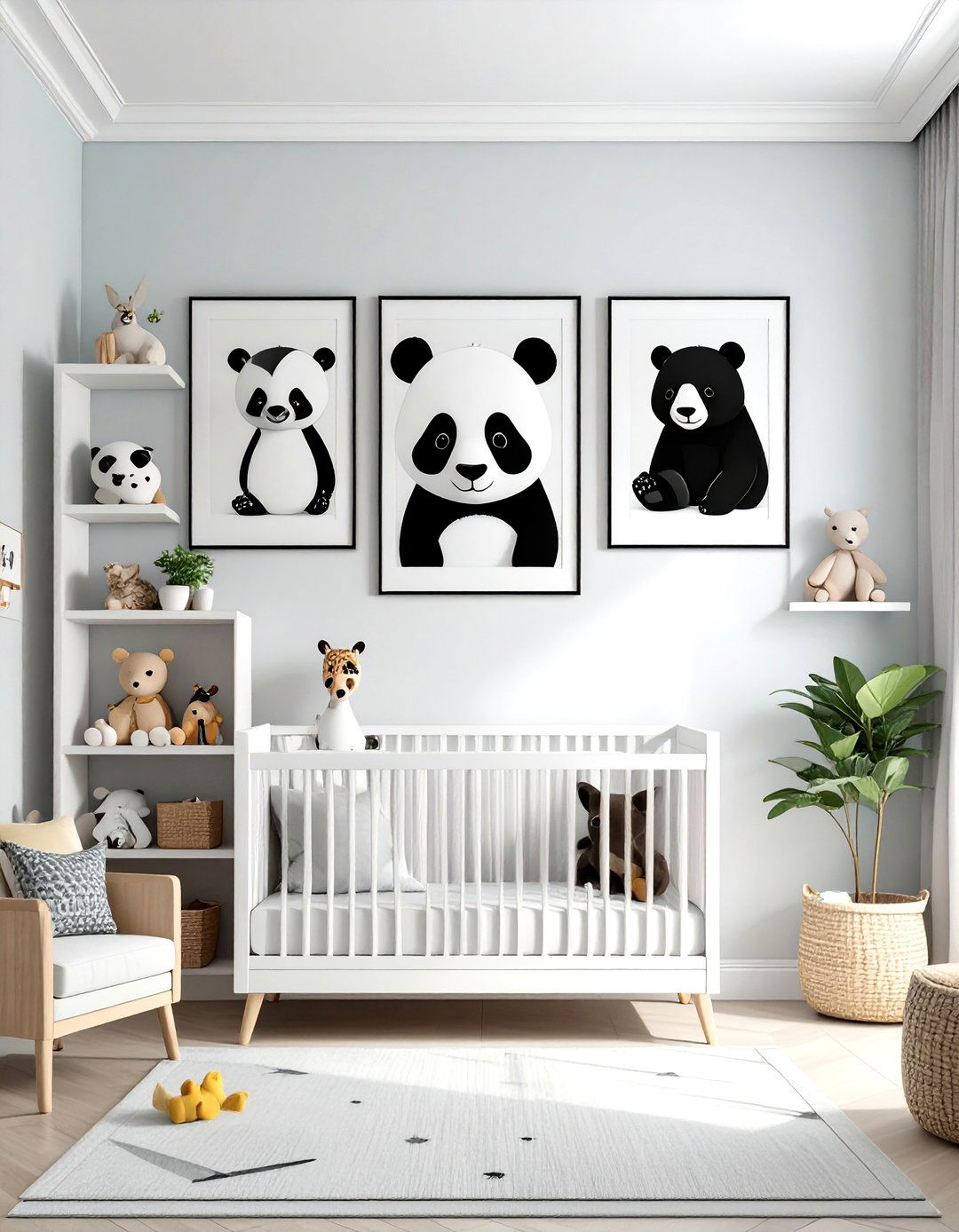
Another eye-catching idea is curating a series of black-and-white animal portraits—penguins, pandas, or baby safari friends—in identical frames along one wall of the nursery. Babies are drawn to facial symmetry, and the monochrome palette keeps the display cohesive even as you switch prints for birthdays or alphabet themes. Use lightweight, shatter-resistant acrylic instead of glass for safety, and hang pieces low enough for tummy-time viewing but out of tiny reach once crawling begins. Limiting the gallery to one subject per frame maintains calm, while mixing mat sizes introduces subtle rhythm without extra color. If space is tight, lean small framed prints on floating ledges for easy rearranging.
4. Geometric Statement Rug
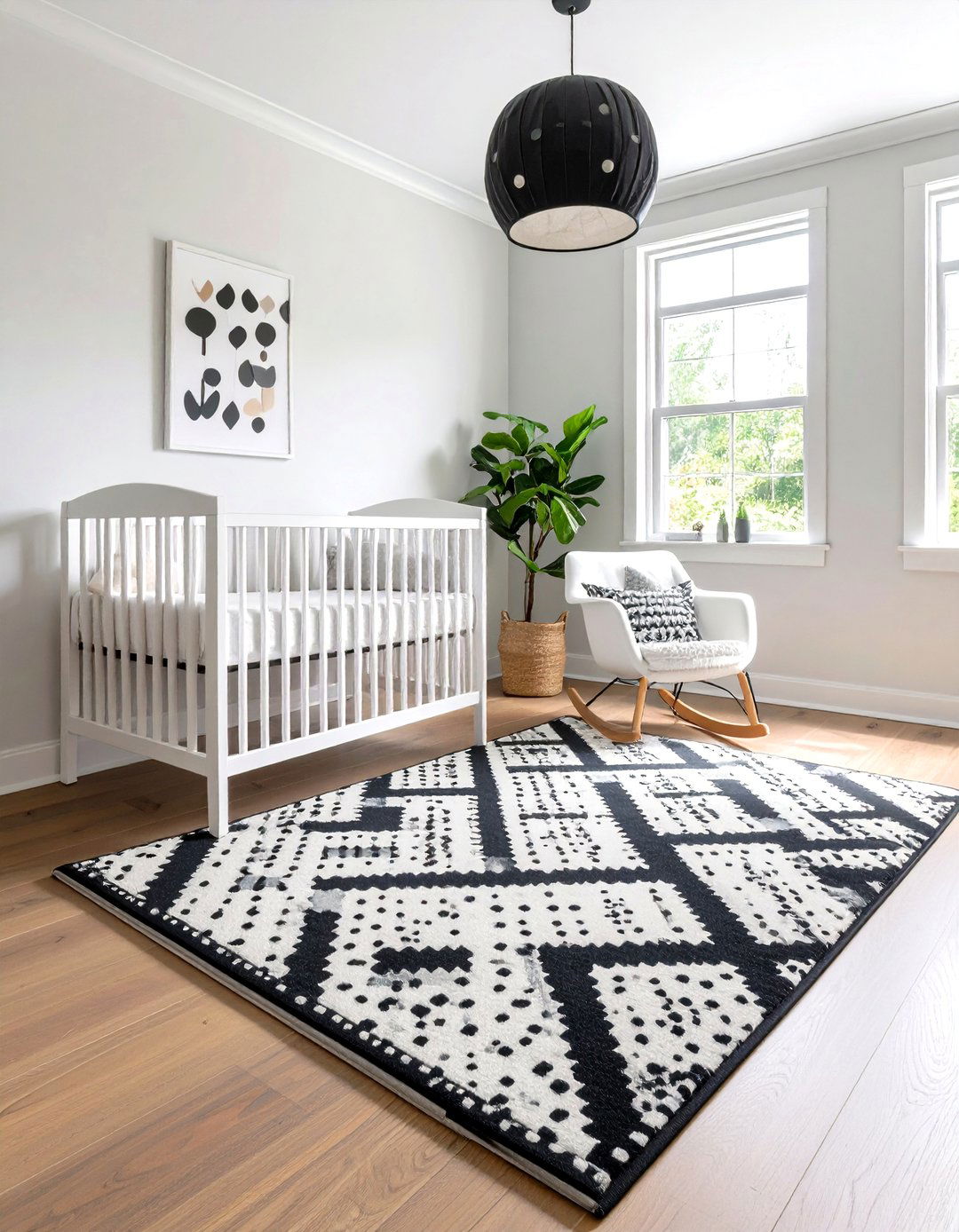
To anchor the black and white nursery, roll out a high-contrast geometric rug—think chevrons, dots, or Moroccan trellis—in a washable fiber blend. The pattern provides comfortable visual stimulation during floor play and makes scraped knees less likely on hardwood. Choose a low-pile option so stacking blocks stays stable, and invest in a rug pad with natural rubber to keep edges from curling. Should a bottle tip over at 3 a.m., machine-washable materials save precious time. When your little one shifts to toddler toys, the neutral rug remains stylish with almost any theme, from outer-space blues to blush florals, meaning no costly replacement.
5. Monochrome Picture-Rail Story Wall
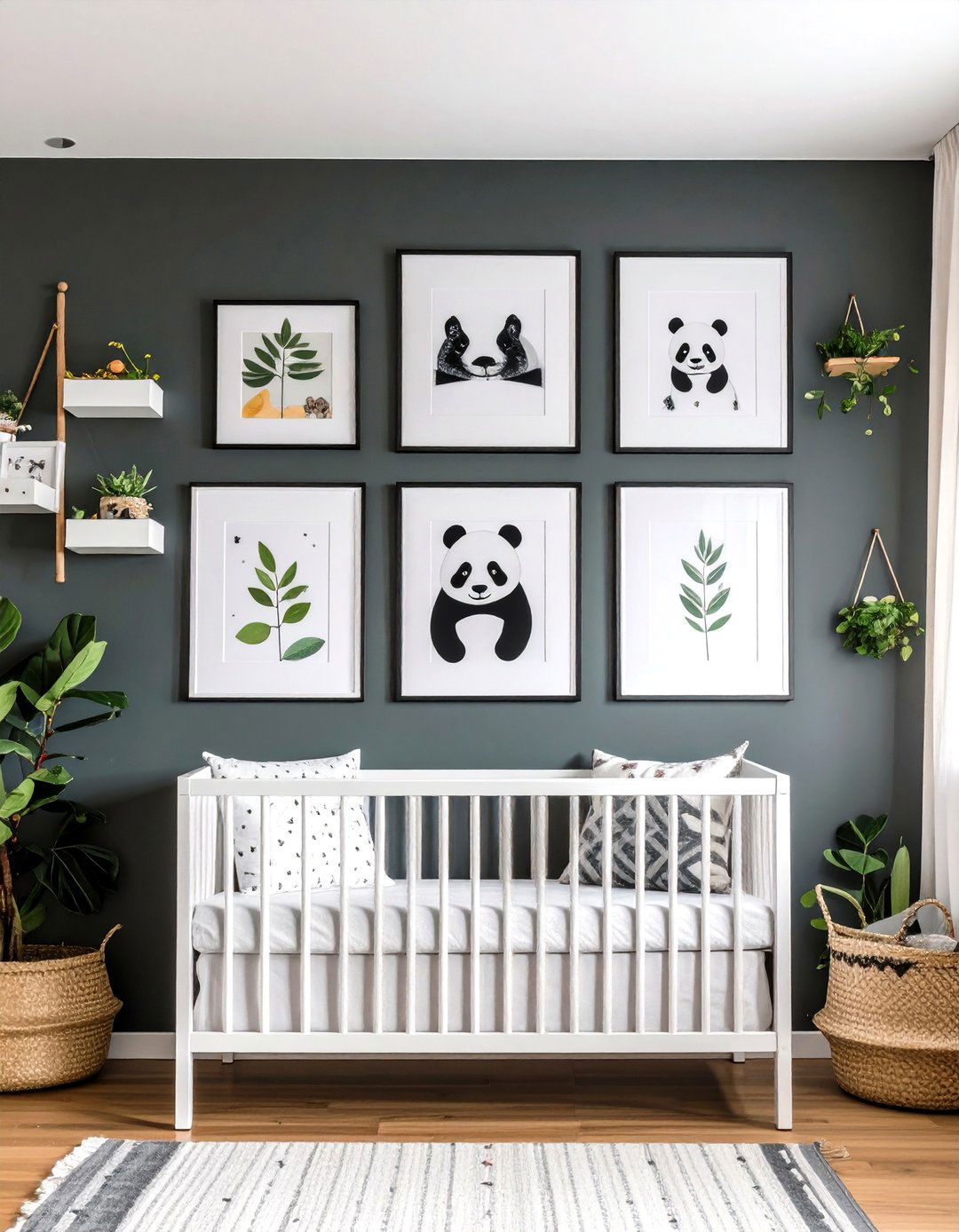
Installing a gallery rail around the room—about eye level for an adult sitting in the nursing chair—creates a rotating library of art, flashcards, or milestone photos in the nursery. Mount slim white shelves against a black feature wall or vice versa to maximize contrast. Because prints rest on the ledge rather than hanging, you can swap seasonal quotes or alphabet posters without new holes. Add one or two accent toys like a plush panda for depth, but keep spacing generous so the wall feels curated, not cluttered. This flexible setup grows with your child, later displaying finger-paint masterpieces or early reader books.
6. Layered Textures for Cozy Contrast
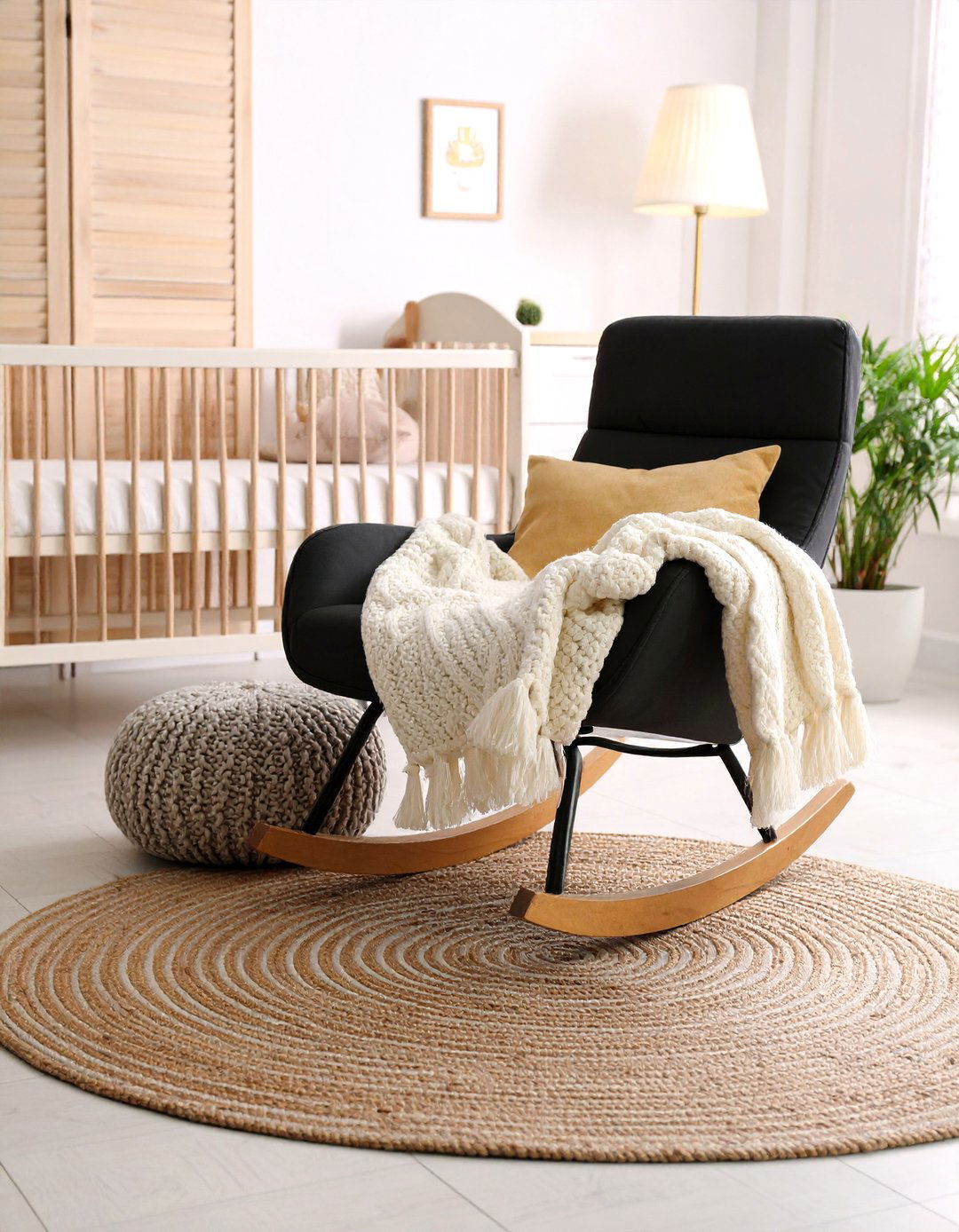
Soft layers keep a monochrome nursery from feeling clinical. Mix nubby cotton throws, loop-pile rugs, and velvet pillows in grayscale tones to add tactile warmth without adding color. Babies explore with their fingers long before they master words, so varying surfaces encourages sensory discovery. Stick to machine-washable fabrics, and rotate them seasonally—lightweight gauze in summer, plush sherpa in winter—to regulate temperature naturally. A generous white knit blanket draped over a matte-black rocker bridges the palette and invites middle-of-the-night snuggles. Because textures—not hues—deliver the drama, you can update patterns inexpensively as trends change.
7. Painted or Wallpapered Ceiling Surprise
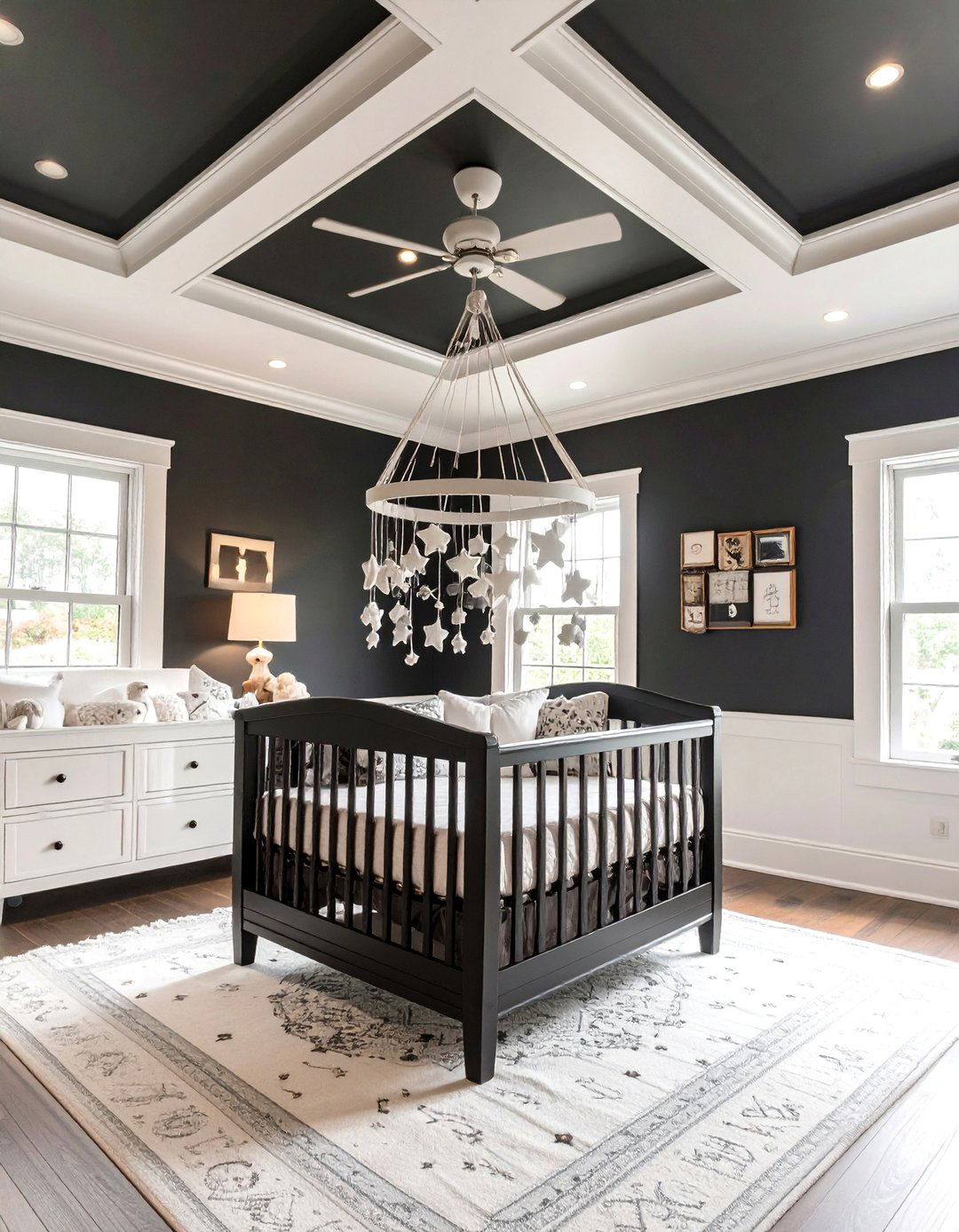
Unlike walls that may host furniture, the nursery ceiling offers uninterrupted canvas. Coating it in a soft black or applying star-print wallpaper draws a baby’s gaze upward during lullabies, creating visual calm without cluttering floor space. Pair the dark lid with white crown molding to frame the effect and bounce light back down. If commitment feels scary, removable peel-and-stick panels come off cleanly when a future color craving hits. For added whimsy, suspend a simple white mobile so its silhouette stands out against the dark backdrop, amplifying motion and depth.
8. Two-Tone Convertible Crib

A two-tone crib—white spindles paired with a matte-black frame—brings sculptural interest to the nursery while staying within the color scheme. Look for models certified to current safety standards and offering multiple mattress heights, so the piece journeys from newborn naps to early climbing attempts. The split palette hides inevitable teething rail marks better than all-white and keeps dust less visible than full black. Echo the dual finish with a matching dresser-changer combo or a storage bench to create cohesion. Since the crib often becomes the room’s focal point, the two-tone style delivers instant designer polish without extra décor.
9. Interchangeable Textile Sets
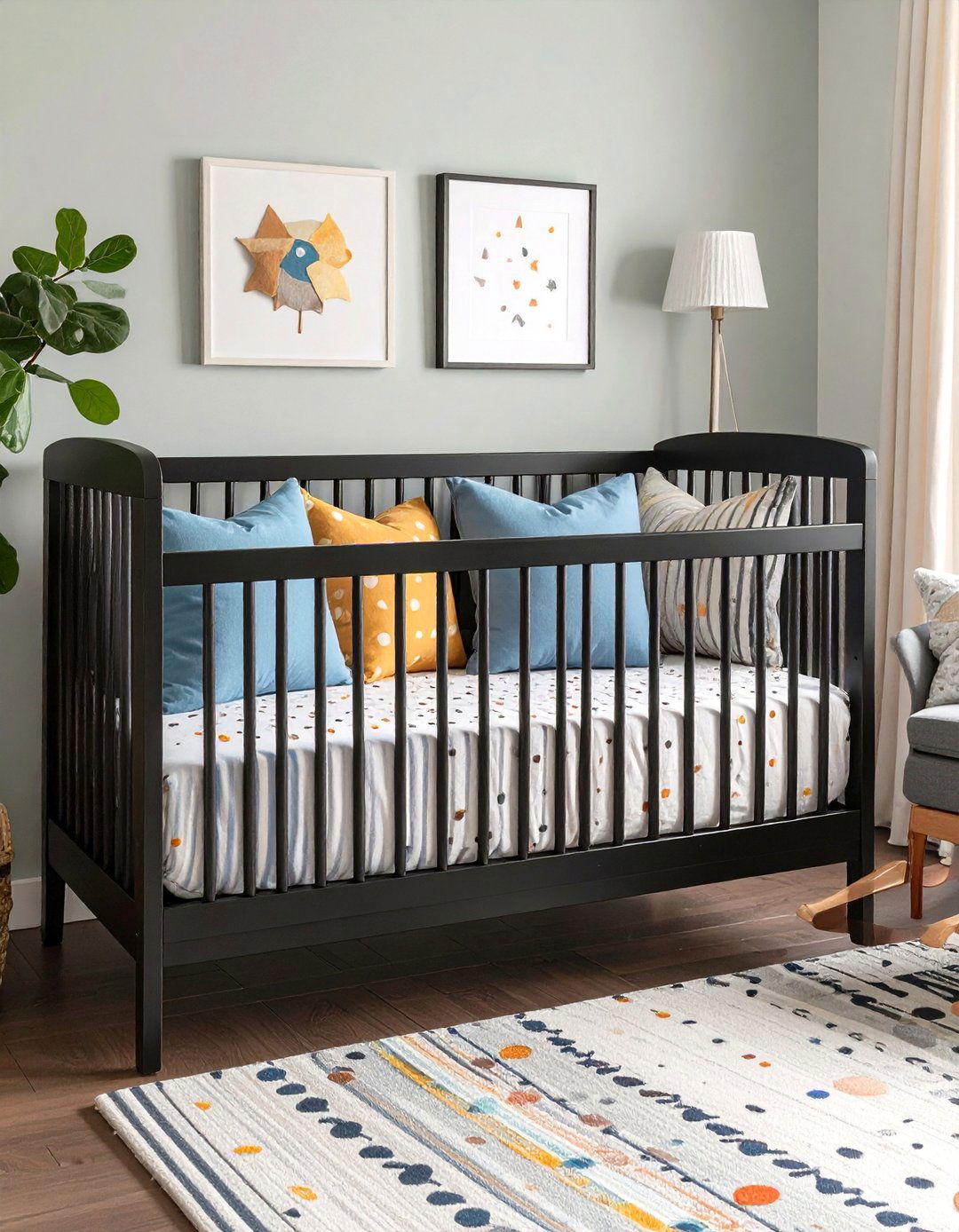
With, say, three sets of fitted sheets—stripes, dots, and solids—you can refresh the entire black and white nursery vibe in minutes. Stock them in coordinating but not matching patterns so mixing remains foolproof. A change of sheet plus swapping the throw pillow on the rocker stops the room from feeling static and helps manage laundry cycles. Opt for GOTS-certified organic cotton or bamboo blends to keep baby’s skin happy. When you eventually introduce a signature color, slide it in here—sage green dots on charcoal, for instance—without repainting walls or buying new furniture.
10. Shatter-Safe Framed Mirror
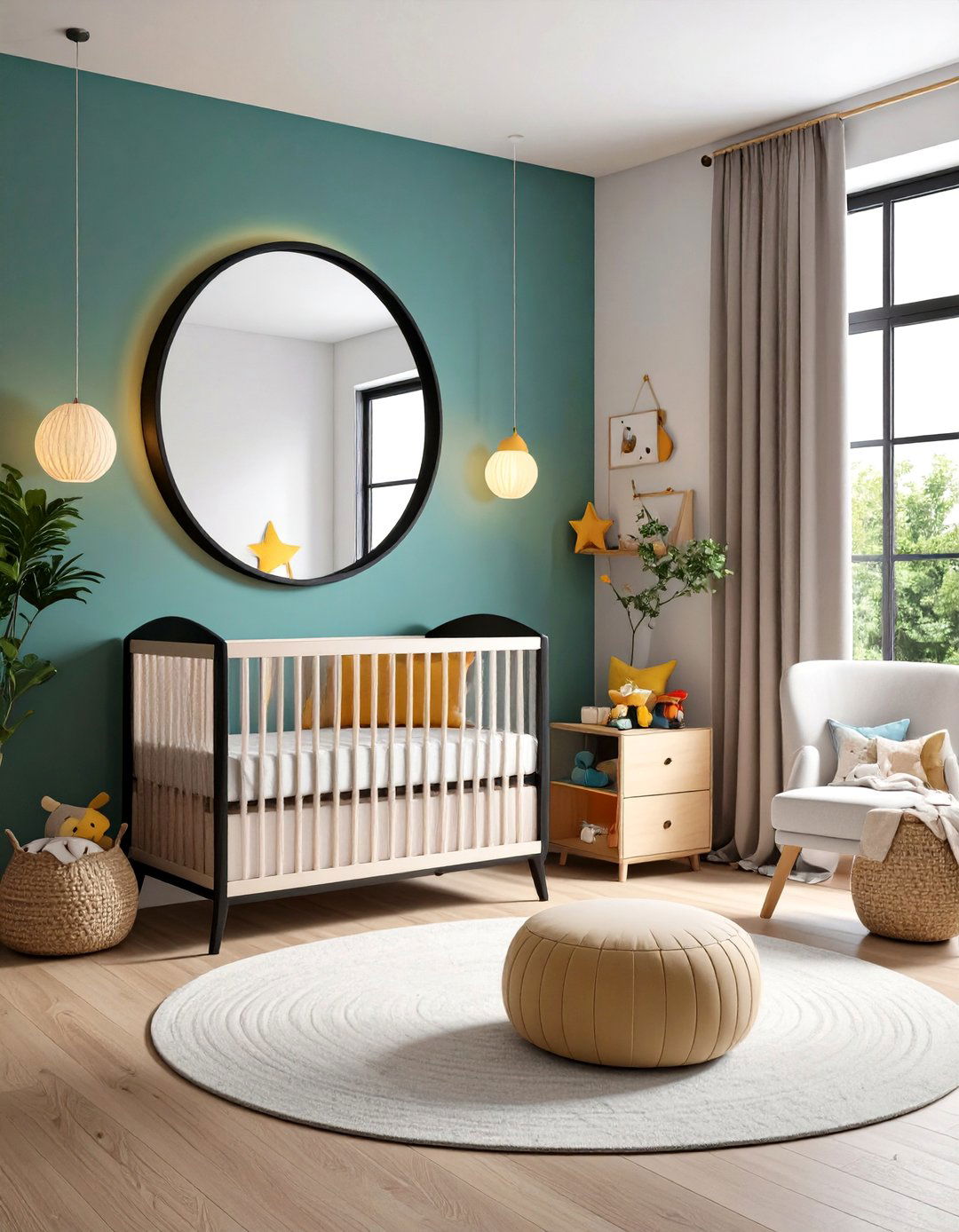
Mounting an acrylic, shatter-safe mirror with a slim black frame at floor-climber height boosts self-recognition and stretches light around the nursery. Rounded corners and tamper-proof hardware guard against accidents, while built-in LED backlighting doubles as a gentle night-light. Babies love tracking their own movement, and the reflective surface complements monochrome décor by multiplying patterns already present in rugs or mobiles. Position the mirror opposite a window if possible to bounce daylight deeper into the room; in darker corners, pair it with a low-wattage sconce for a soft glow during 2 a.m. diaper duty.
11. Vintage Finds With Personality
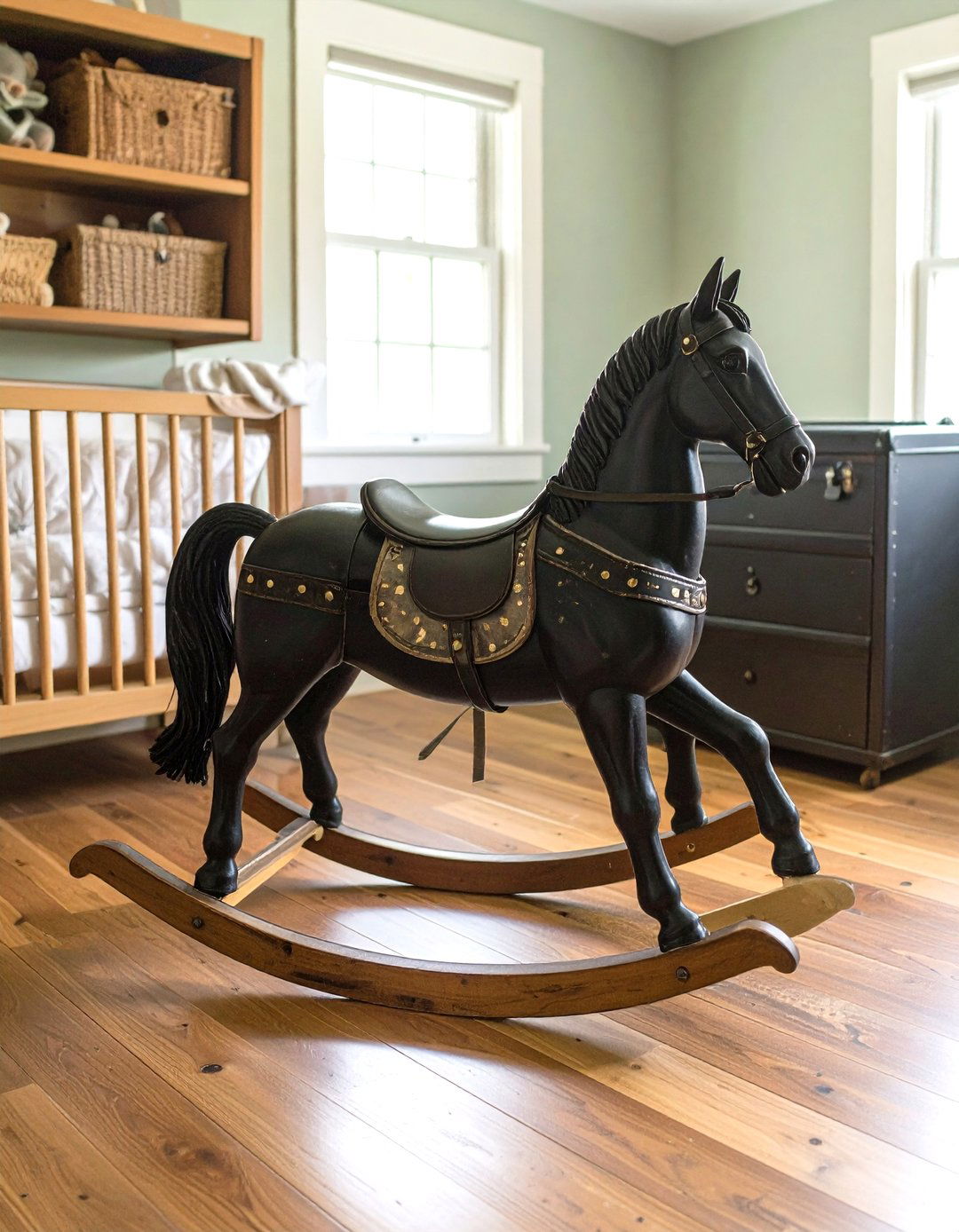
A single vintage accent—perhaps an antique black rocking horse or a white-enameled metal toolbox turned diaper caddy—adds storybook charm to a black and white nursery. Scour local markets for pieces with worn patina; the neutral palette lets age spots read intentional, not tired. Before bringing anything home, sand rough edges and finish with baby-safe sealant. By upcycling instead of buying new, you model sustainability and potentially save money for splurges elsewhere. These one-of-a-kind details often become keepsakes that move into big-kid rooms, proving monochrome doesn’t equal minimal emotion.
12. Chalkboard Corner for Creative Play
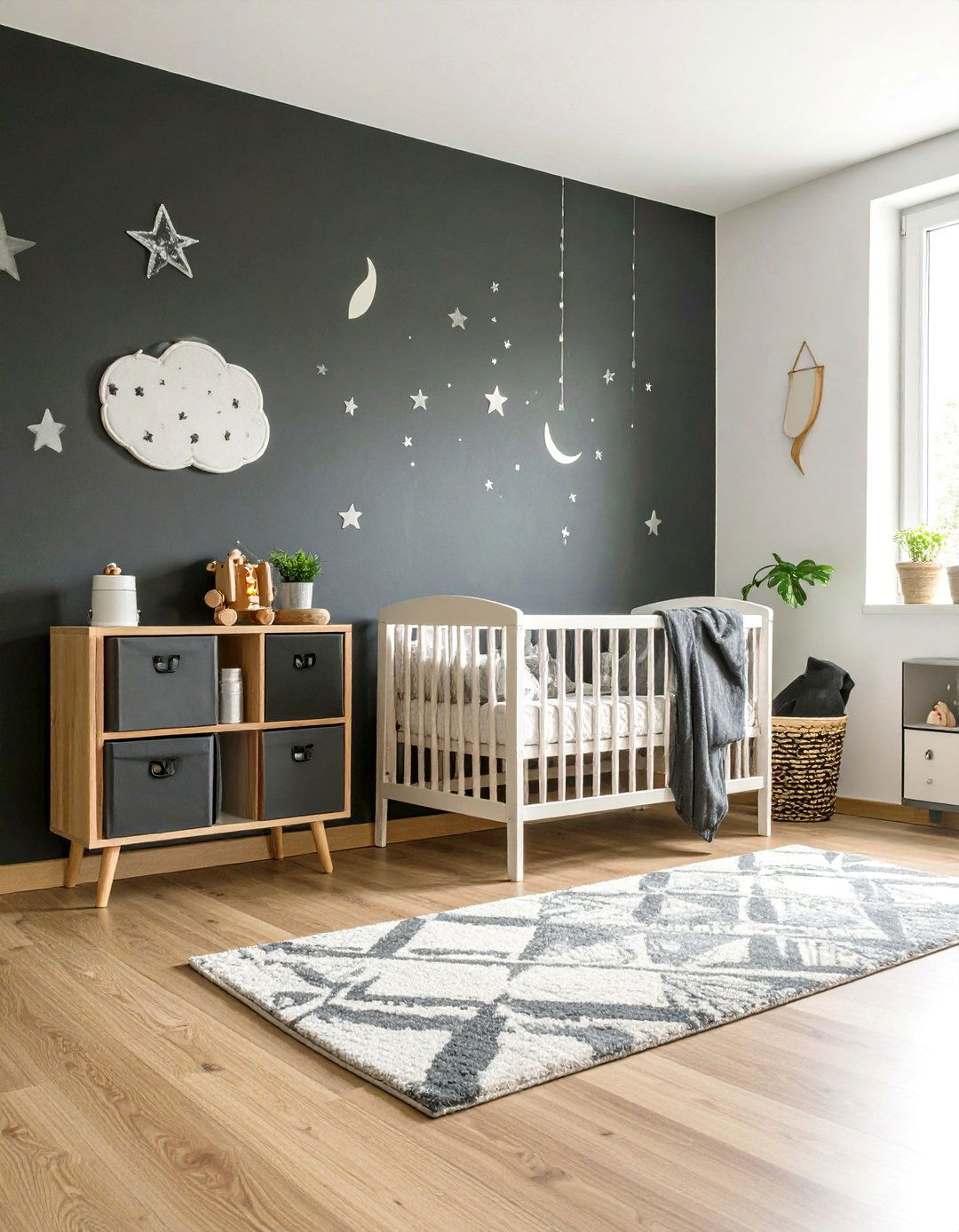
Painting a recessed nook or closet door with washable chalkboard paint invites future scribbles while maintaining the black and white scheme. In infancy, high-contrast doodles or milestone notes entertain during feeds; later, toddlers take over with their own masterpieces. Keep chalk in a lidded tin on a nearby shelf and slip a damp microfiber cloth into a magnetic hook for quick wipe-downs. Because the surface is purposely dark, stray marks are part of the look rather than an eyesore. The chalkboard also doubles as a growth-chart zone—just line one edge with discreet hash marks.
13. Metallic Accent Pop
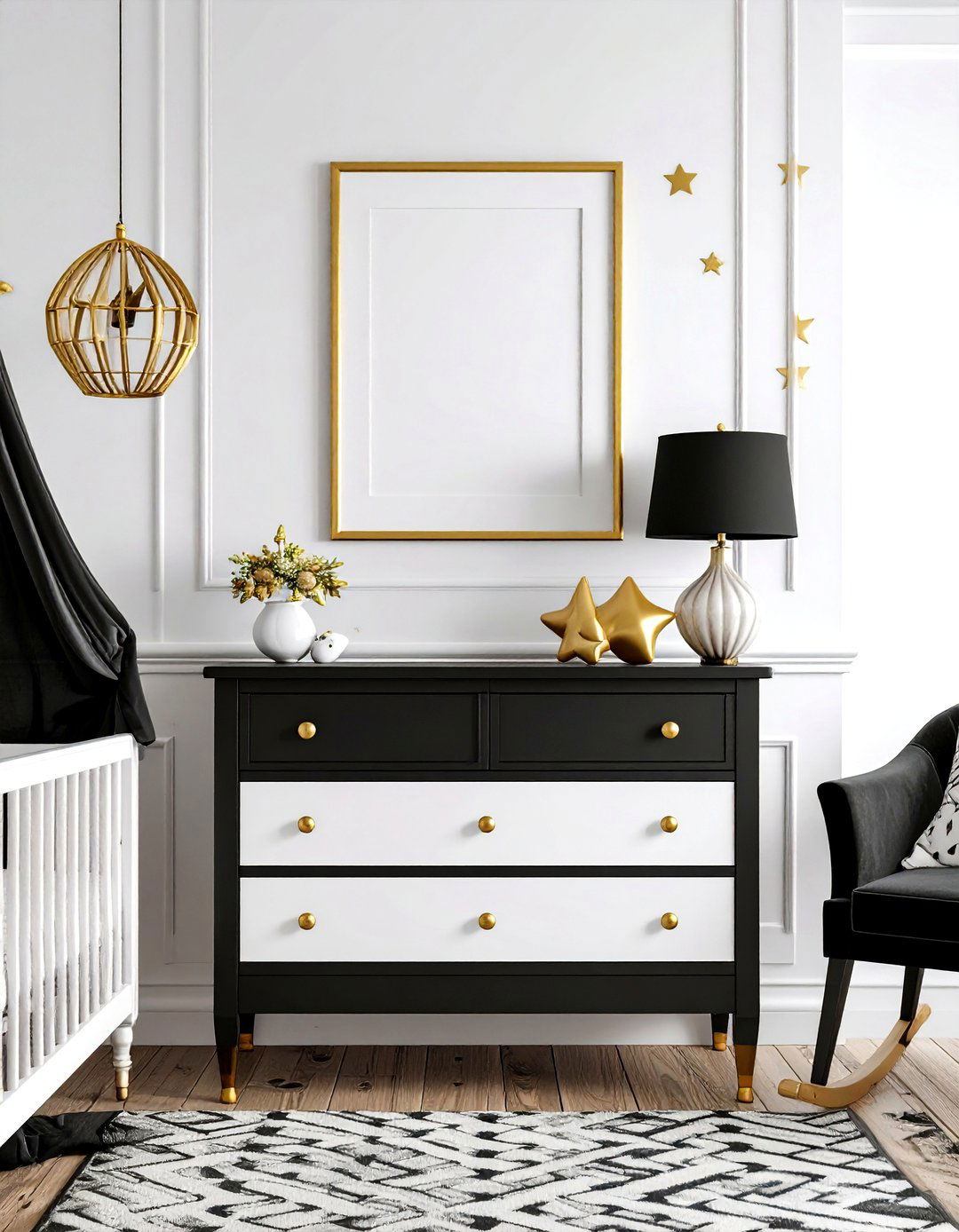
Despite the monochrome base, introducing a restrained touch of metallic—brass drawer pulls, a gold picture frame, or chrome lamp feet—lifts the nursery from flat to luxe. The reflective glint balances matte black elements and prevents the palette from reading heavy. Stick to one metal family for cohesion, and distribute it sparingly: three small accents create the “visual triangle” designers love. Metallics also transition beautifully if you later add blush, sage, or navy, making future updates budget-friendly. Because hardware swaps are quick, metallic accents are an easy first DIY win for new parents.
14. Personalized Monochrome Name Banner
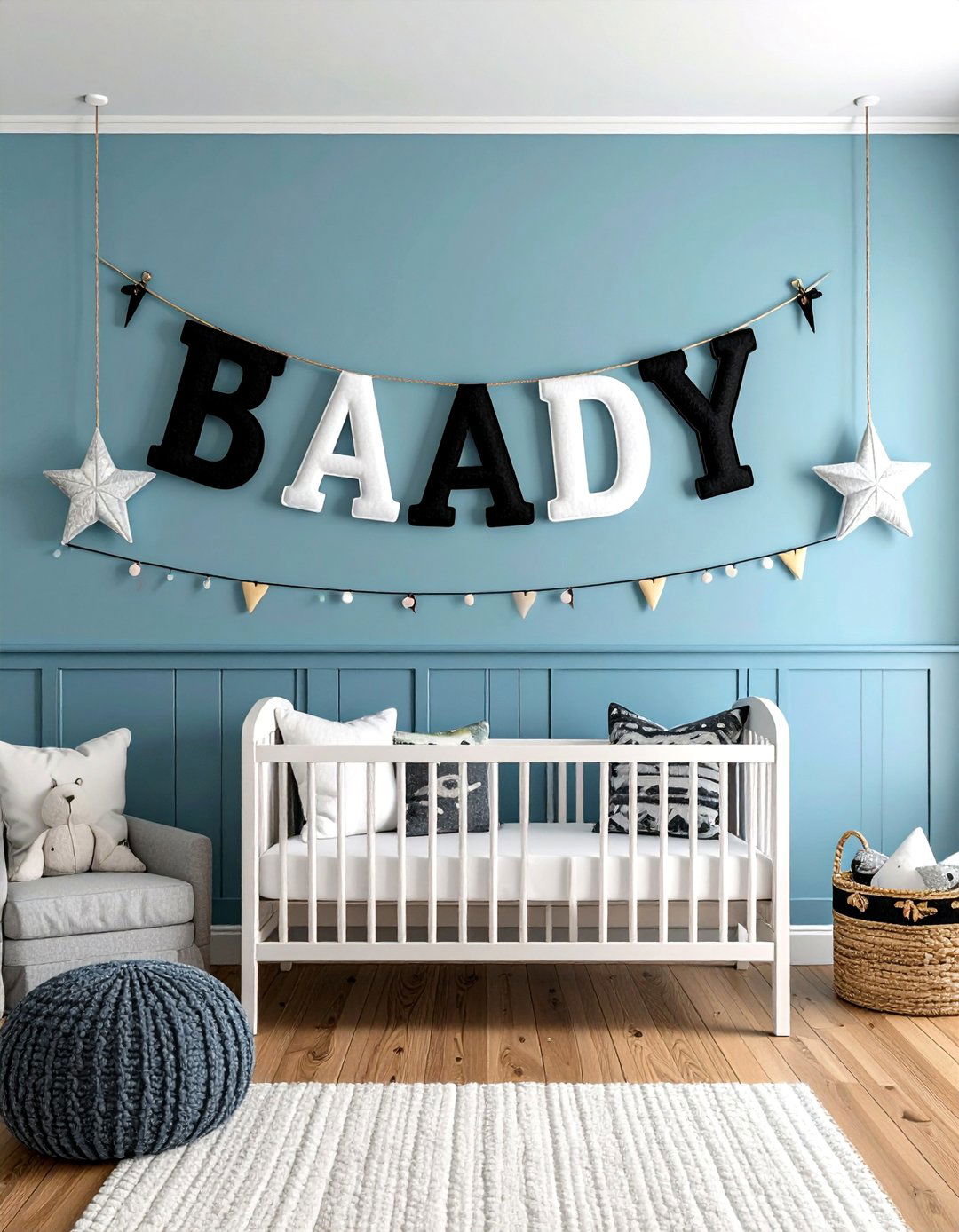
Stringing a felt letter banner spelling your baby’s name across a white wall personalizes the black and white nursery without permanent commitment. Choose chunky letters in alternating black and white or solid charcoal on a contrasting cord. The soft material dampens echo in echo-prone nurseries with hardwood floors. When birthday parties roll around, reuse the banner as photo-booth décor, reinforcing sustainability. As reading skills emerge, toddlers enjoy pointing out familiar letters, turning décor into an early literacy tool. Velcro command hooks make repositioning painless and patch-free.
15. High-Contrast Hanging Mobile
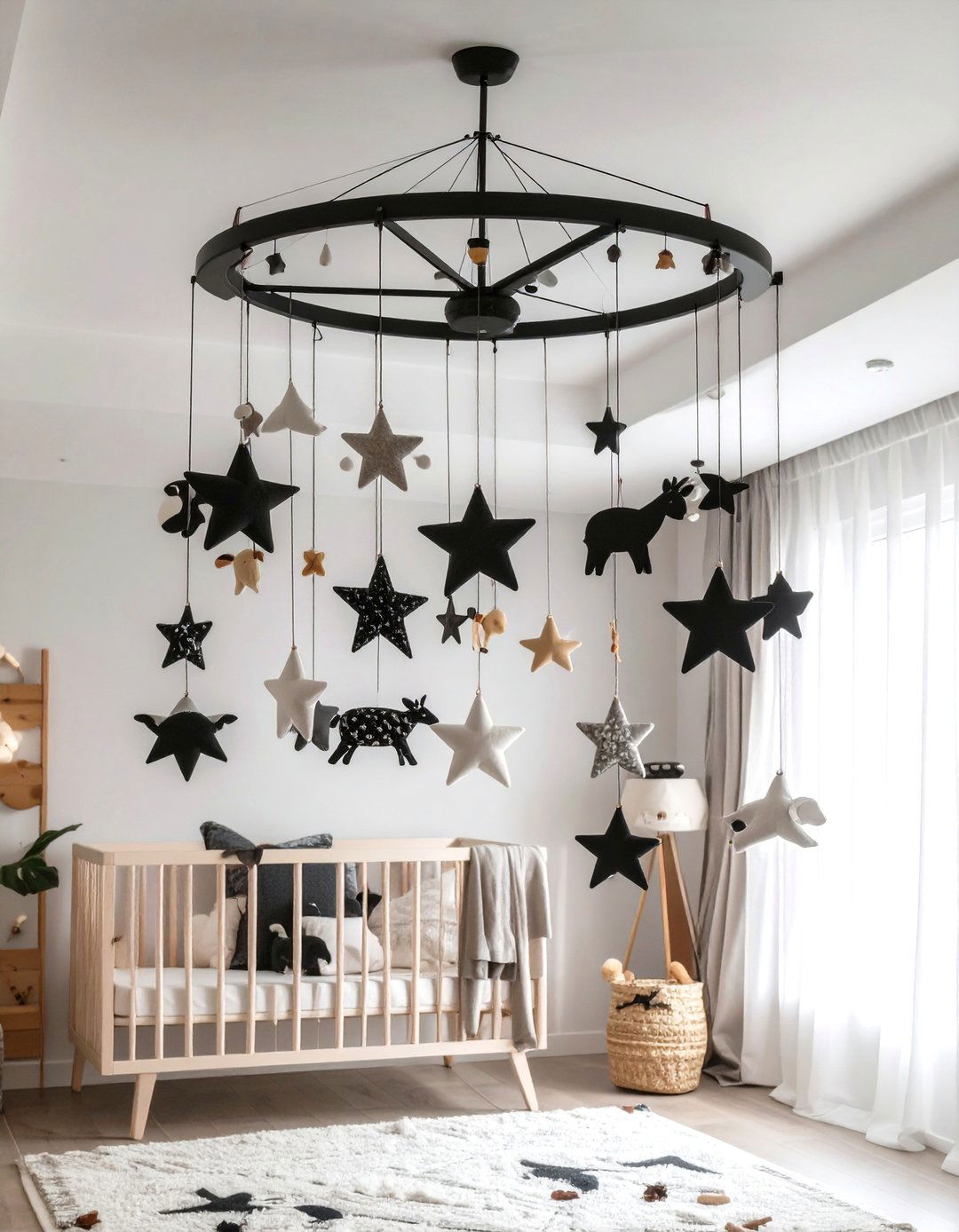
Babies spend surprising amounts of time staring up, so a black and white hanging mobile featuring bold shapes or gentle animal silhouettes keeps them engaged. Mount the mobile so its lowest element stays at least twelve inches above the mattress for safety and easy crib-sheet changes. Rotating components deliver gentle motion without batteries, while the sharp palette helps newborn eyes track movement earlier than pastel counterparts. When the grab phase begins, transfer the mobile to the reading corner ceiling to extend its life and preserve safe sleep guidelines.
16. Layered Lighting Scheme
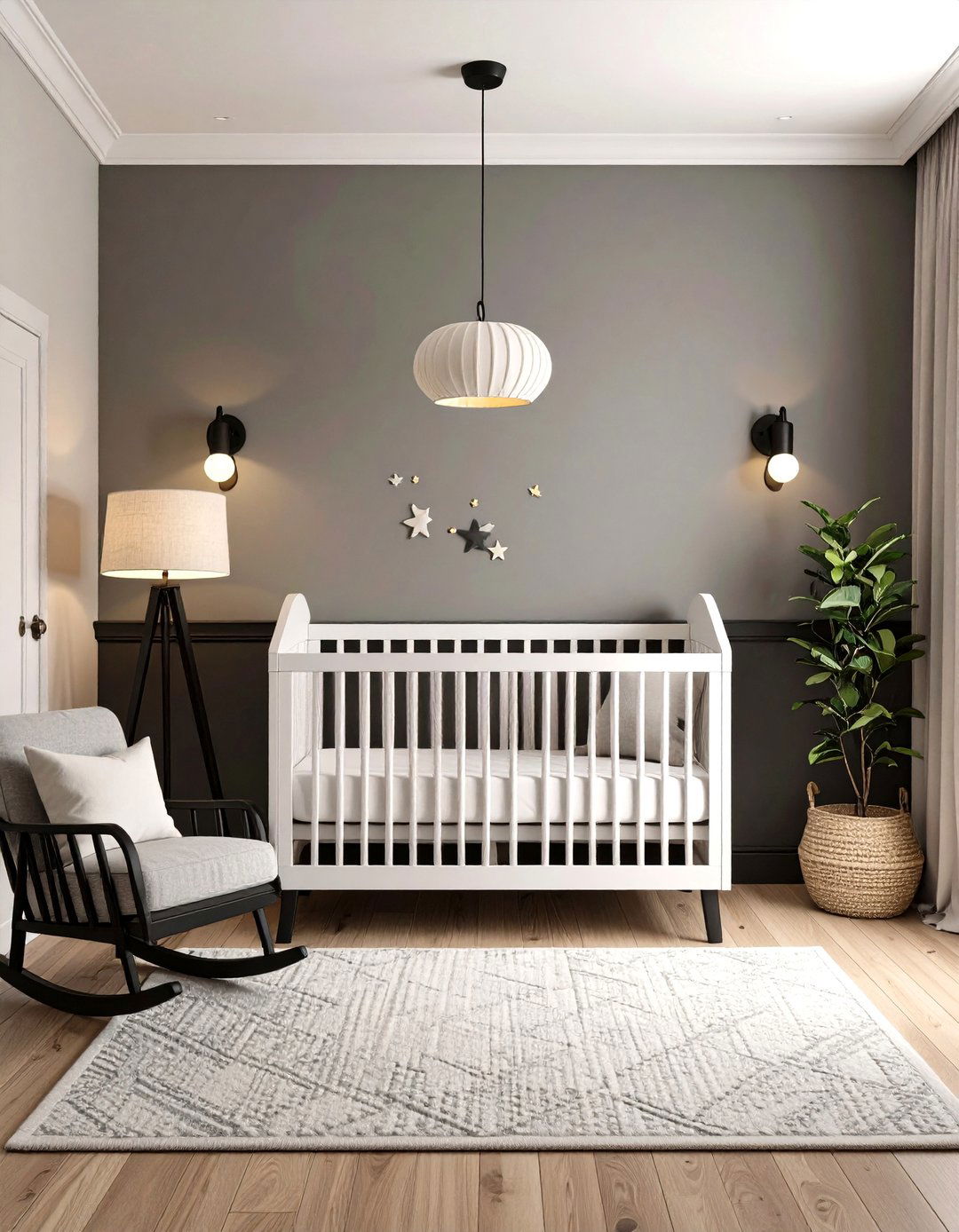
Good lighting keeps late-night tasks sane. Combine a flush white ceiling fixture, dimmable black wall sconces, and a small table lamp with warm-white bulbs to create adaptable zones in the nursery. Use smart switches or plug-in dimmers so you can ease brightness gradually before bedtime. High-contrast shades—white linen on a matte-black lamp base—blend seamlessly with other décor, and separate circuits mean you won’t trip the main light while topping up a dream feed. Position the sconce above the changing area to reduce shadow, safeguarding accurate late-night diaper checks.
17. Modular Storage Baskets
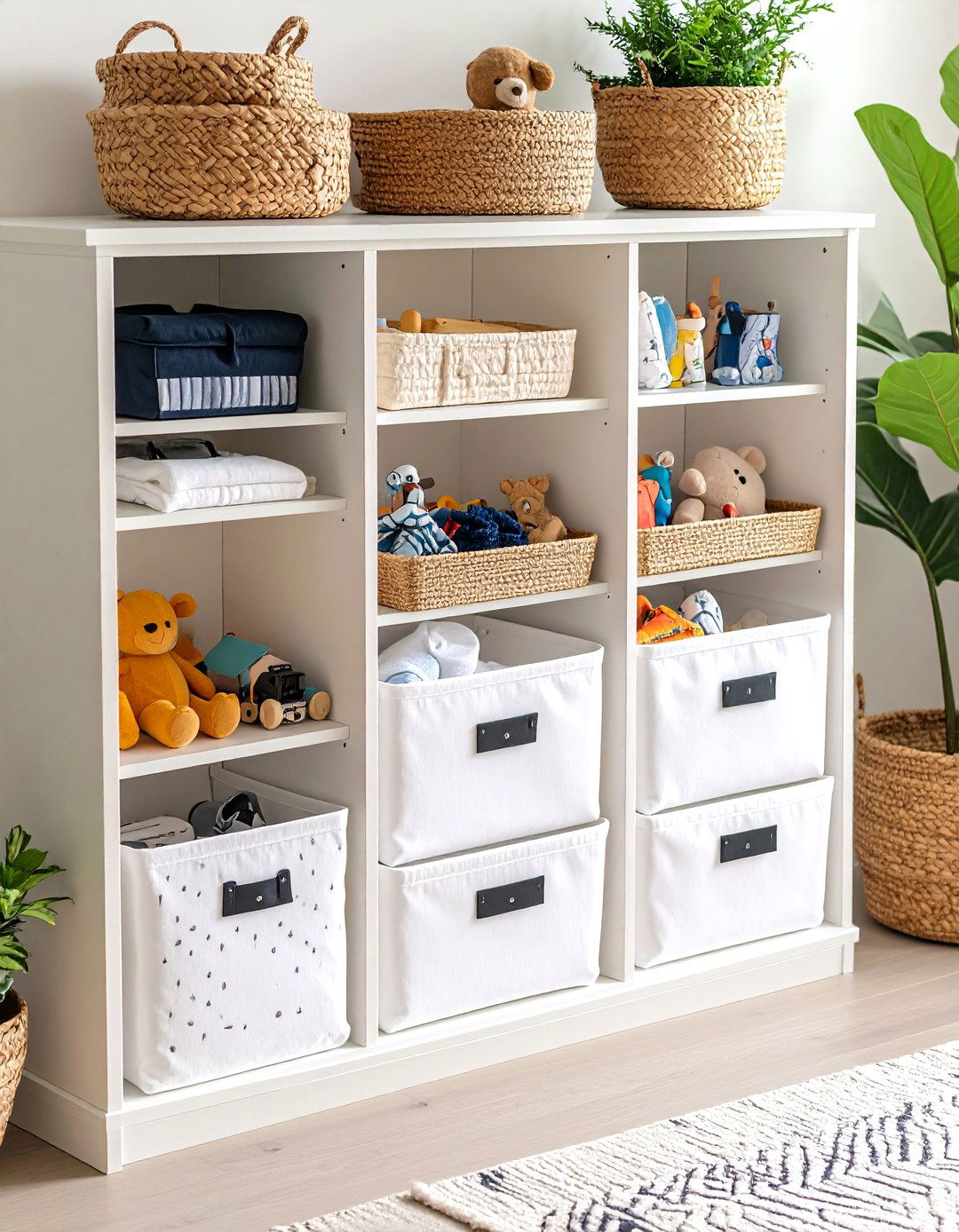
Tucking diapers, loveys, and laundry into matching white canvas bins with black labels keeps the monochrome nursery tidy and visually cohesive. Opt for baskets that slide into an open cubby system; you’ll swap contents easily as needs shift from burp cloths to building blocks. Clear, high-contrast labeling helps sleep-deprived caregivers find essentials fast, and toddlers can later practice sorting toys by picture cues. Choose collapsible designs to fold away when the nursery transitions to a big-kid bedroom, proving your black-and-white investment pays dividends.
18. Cozy High-Contrast Reading Corner
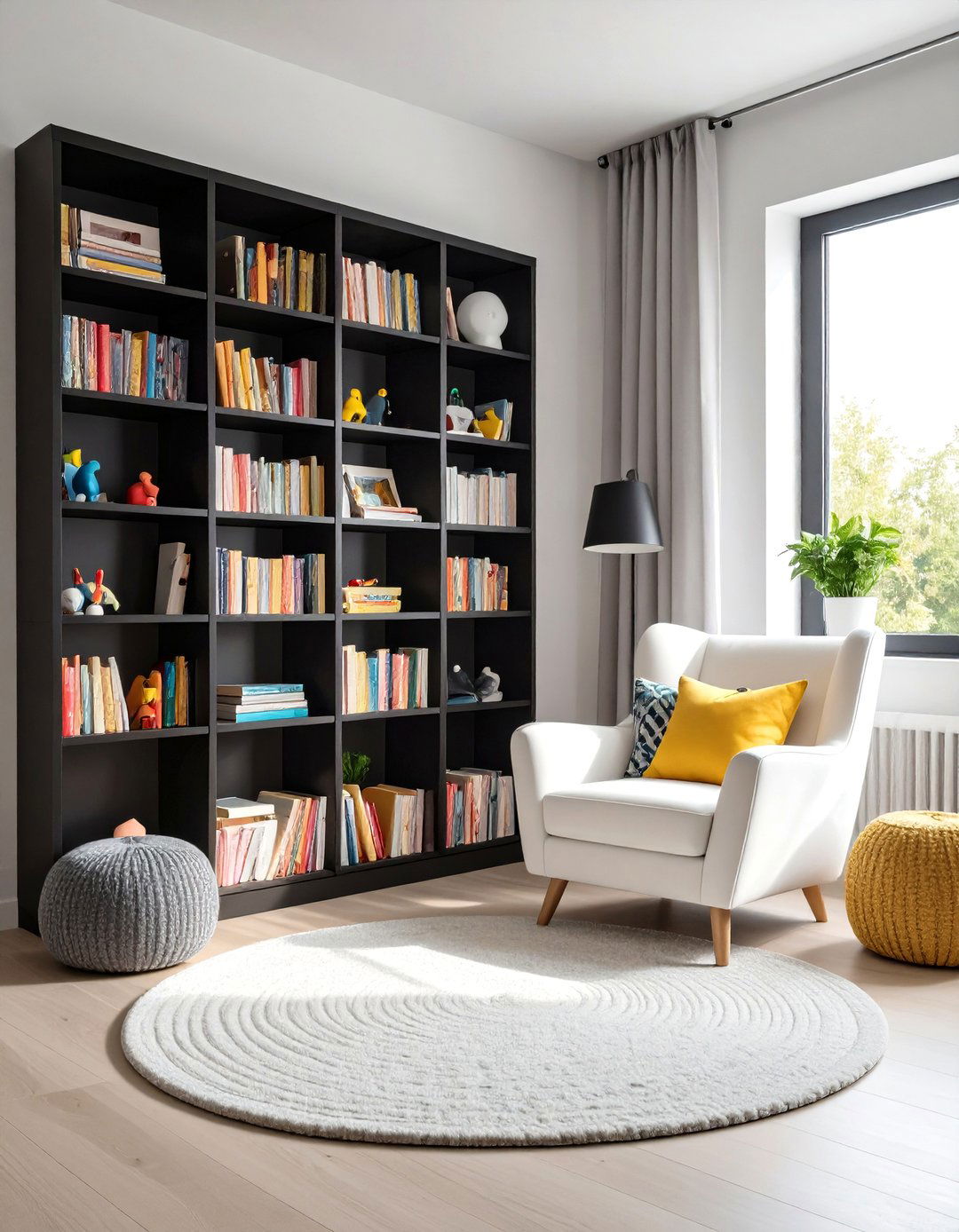
Setting a petite white armchair beside a slim black bookshelf forms an inviting reading corner that visually stimulates without overwhelming. Line the bottom shelf with board books whose covers echo the room’s palette; babies track the dark-light edges even before understanding pictures. Add one plush throw pillow in a single accent hue—mustard, teal, or blush—so future color transitions feel intentional. Overhead, a small clip-on light guarantees page illumination during late-night cluster feeds, and a washable round rug defines the zone while cushioning knees during storytime.
19. Interactive Sensory Board
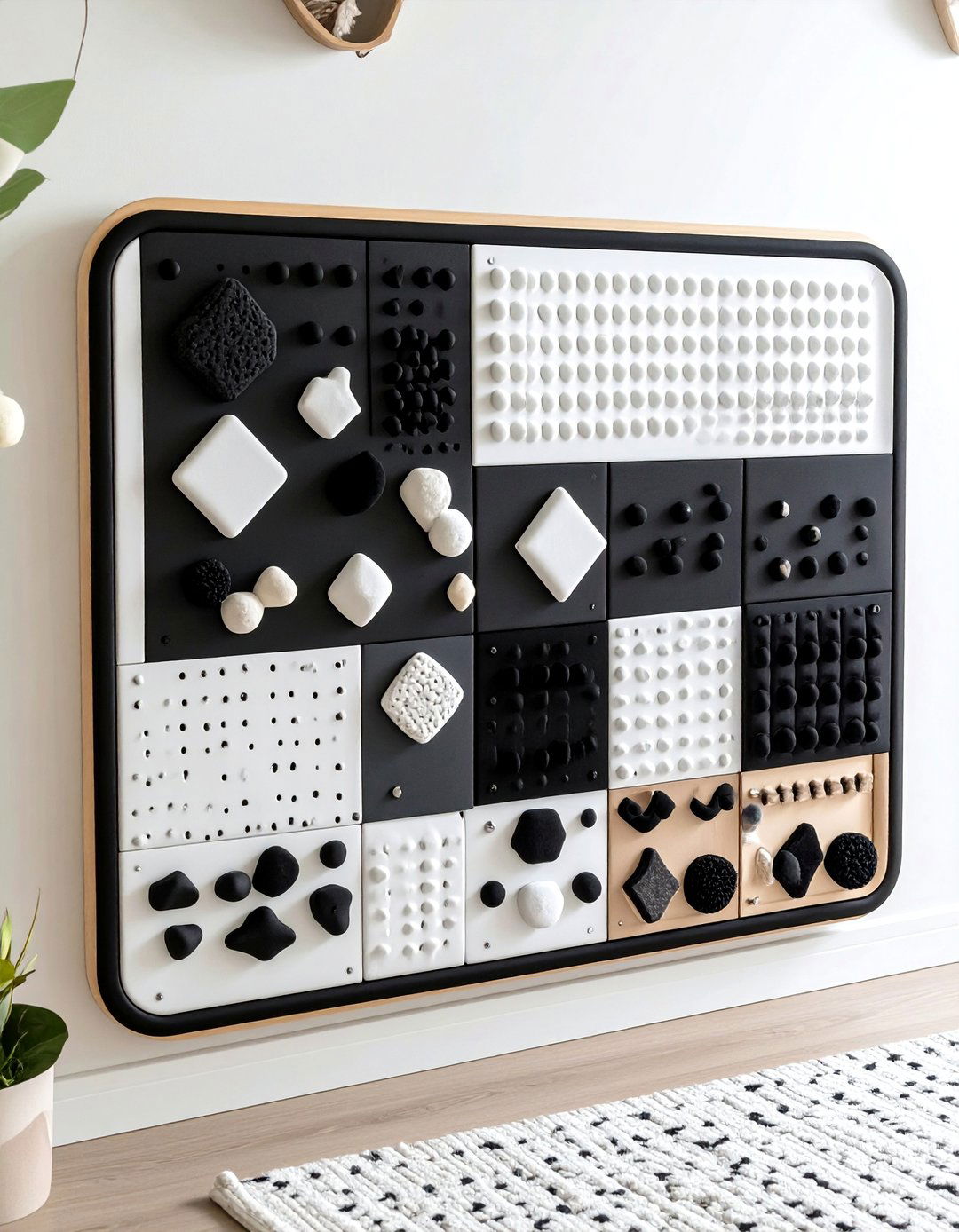
Affix a reversible high-contrast sensory board—featuring black, white, and textured shapes—at crawling height for hands-on exploration. Velcro strips let you swap in new shapes as fine-motor skills advance, maintaining novelty without buying fresh toys. Secure every element firmly and round off sharp corners with sandpaper for safety. The board not only stimulates vision and touch but also occupies little ones during diaper changes if placed near the station. When the board looks worn, give it a quick coat of matte black paint and restart the tactile adventure with updated pieces.
20. Grow-With-Me Décor Strategy

Finally, plan the black and white nursery with longevity in mind: choose foundations—paint, large furniture, window treatments—that work for infants and grade-schoolers alike. A neutral backdrop means you can introduce trend colors via bedding or wall decals instead of repainting entire rooms. Convertible furniture, modular storage, and durable rugs ensure the space morphs from nap haven to homework nook on a reasonable budget. This foresight minimizes waste, saves future weekends, and grants your child ownership by letting them layer personality over a timeless base when their tastes bloom.
Conclusion:
Monochrome doesn’t mean mundane. By blending high-contrast visuals that nurture early development with practical touches that grow gracefully, a black and white nursery becomes a stylish, budget-savvy foundation for years of wonder and learning. Whether you start with a bold accent wall or a subtle sensory board, each idea above proves that the simplest palette often sparks the brightest imagination.


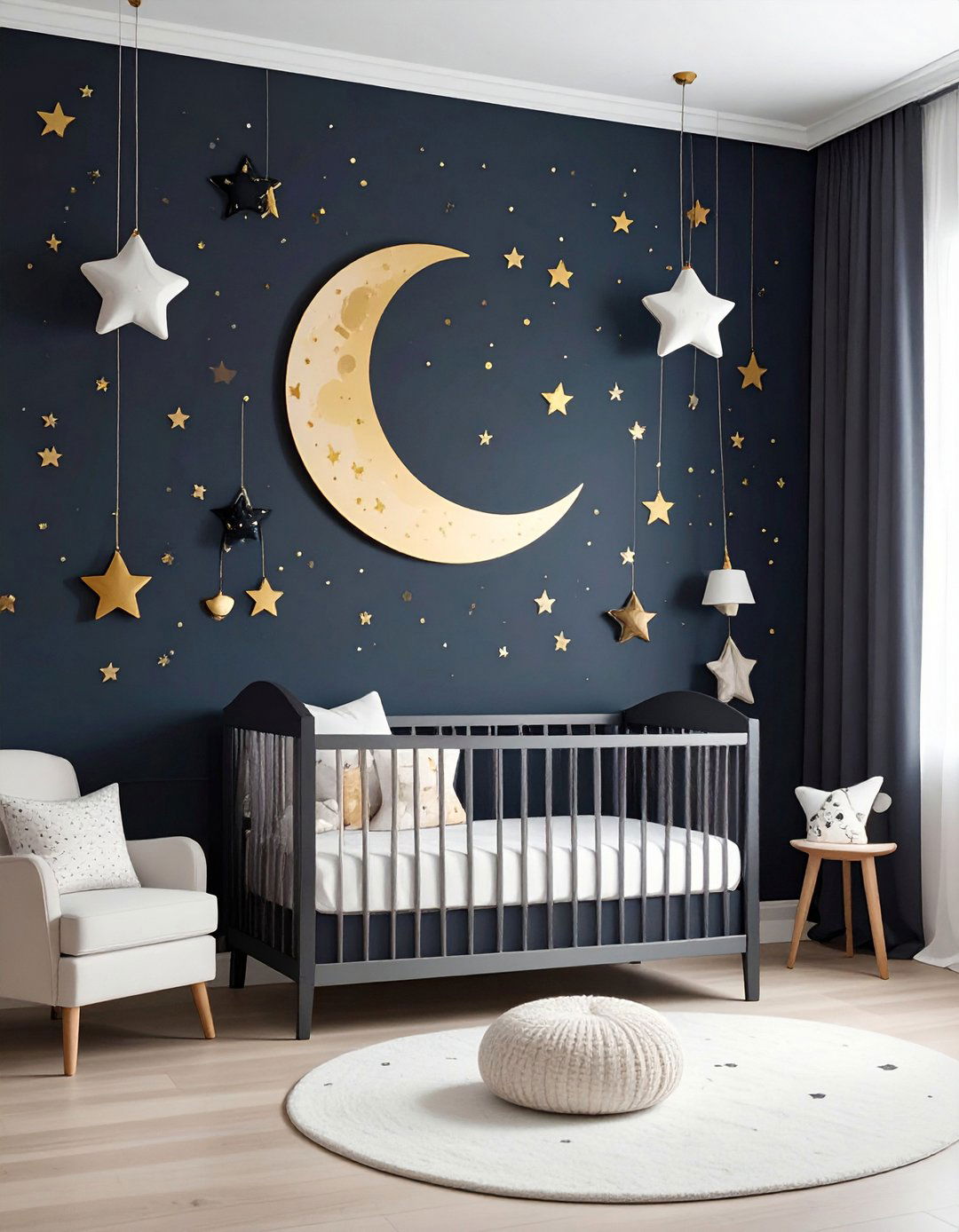
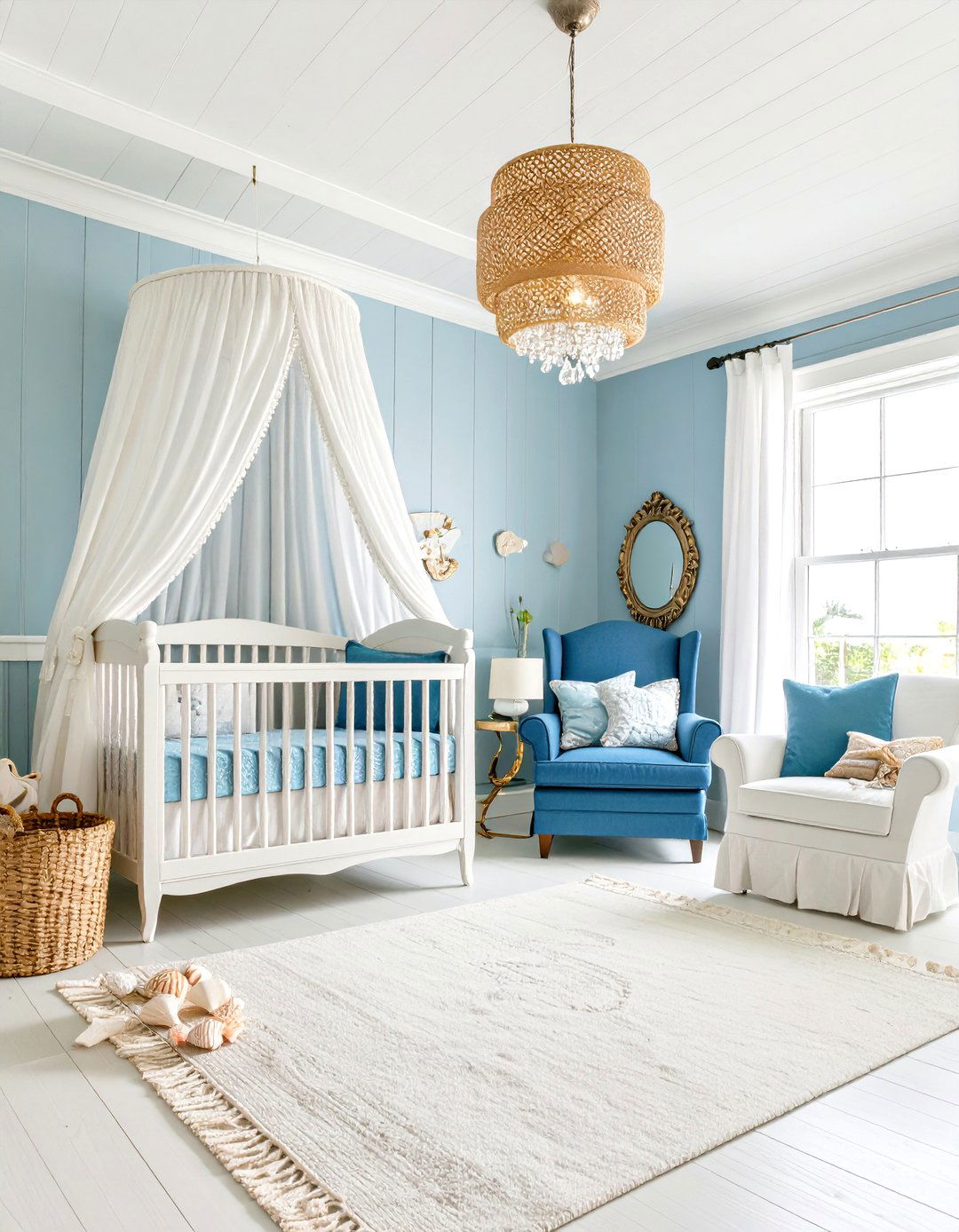
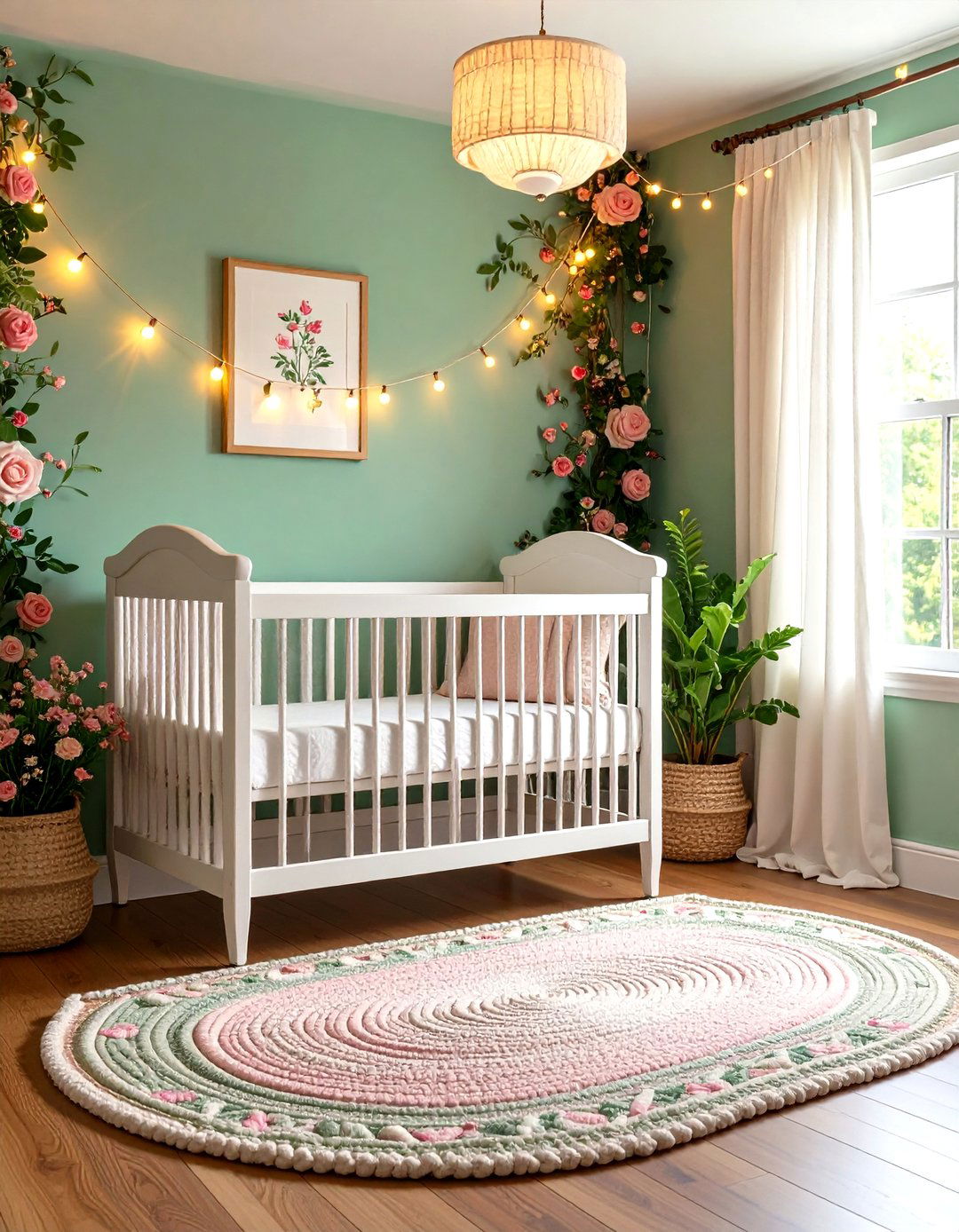
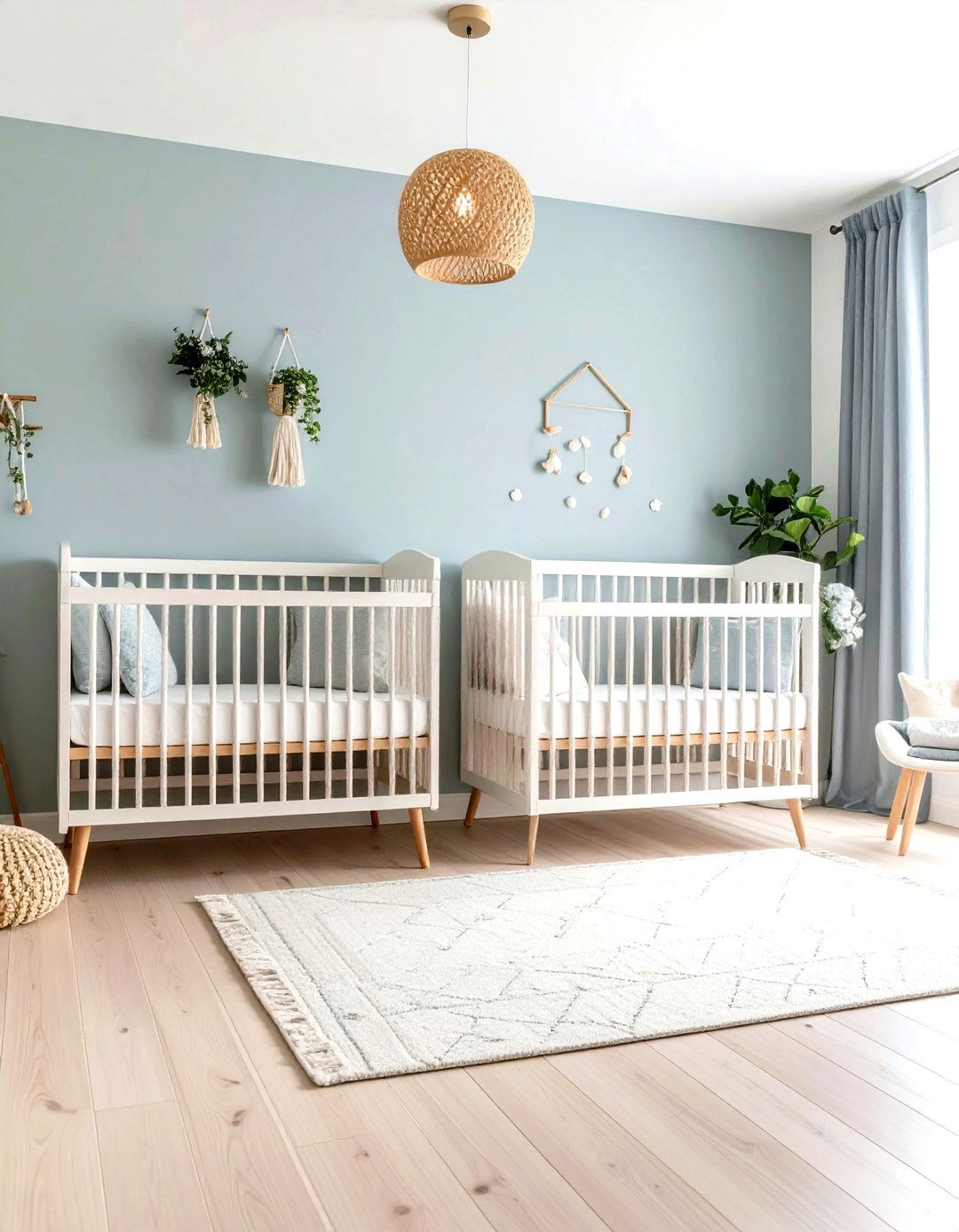
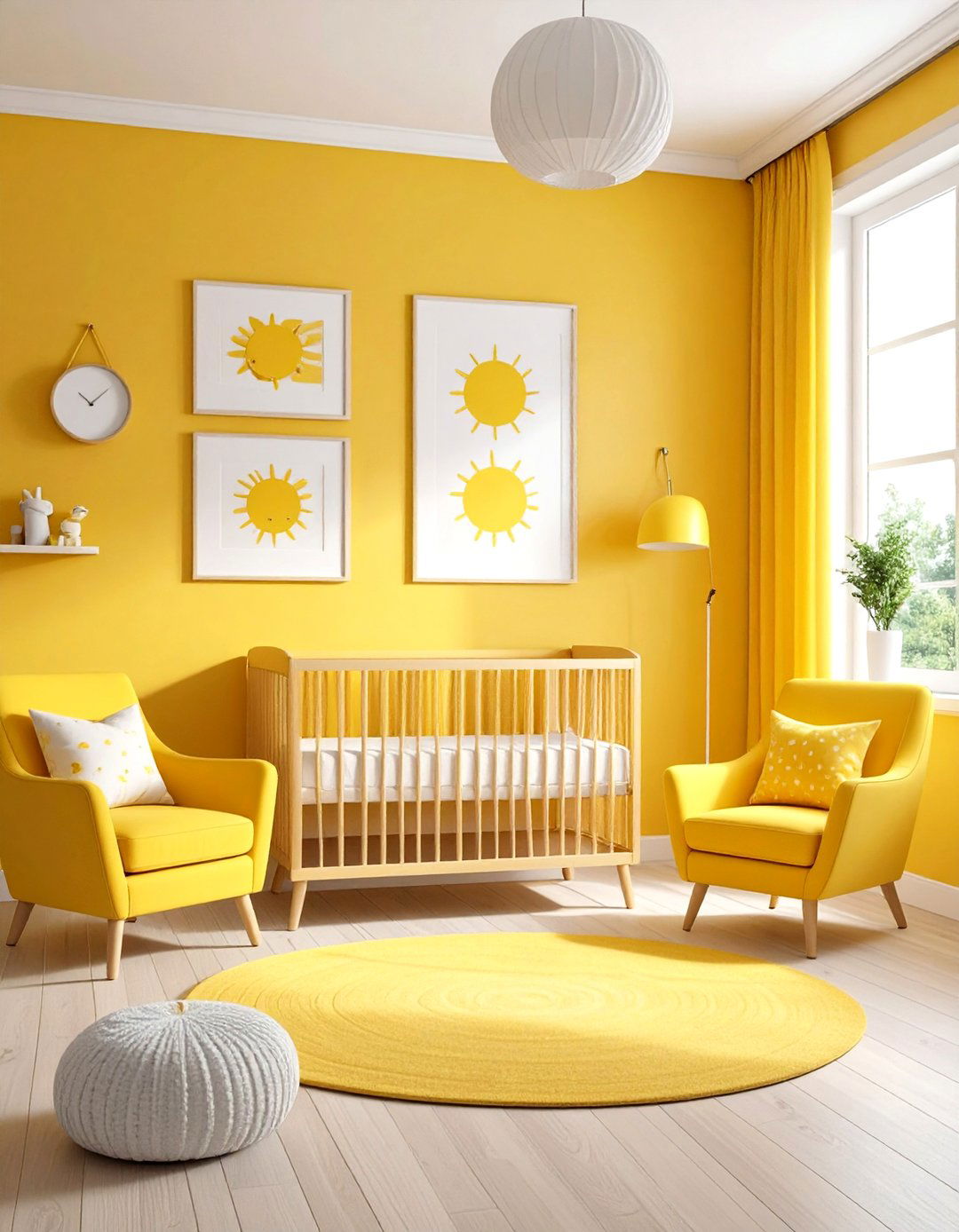
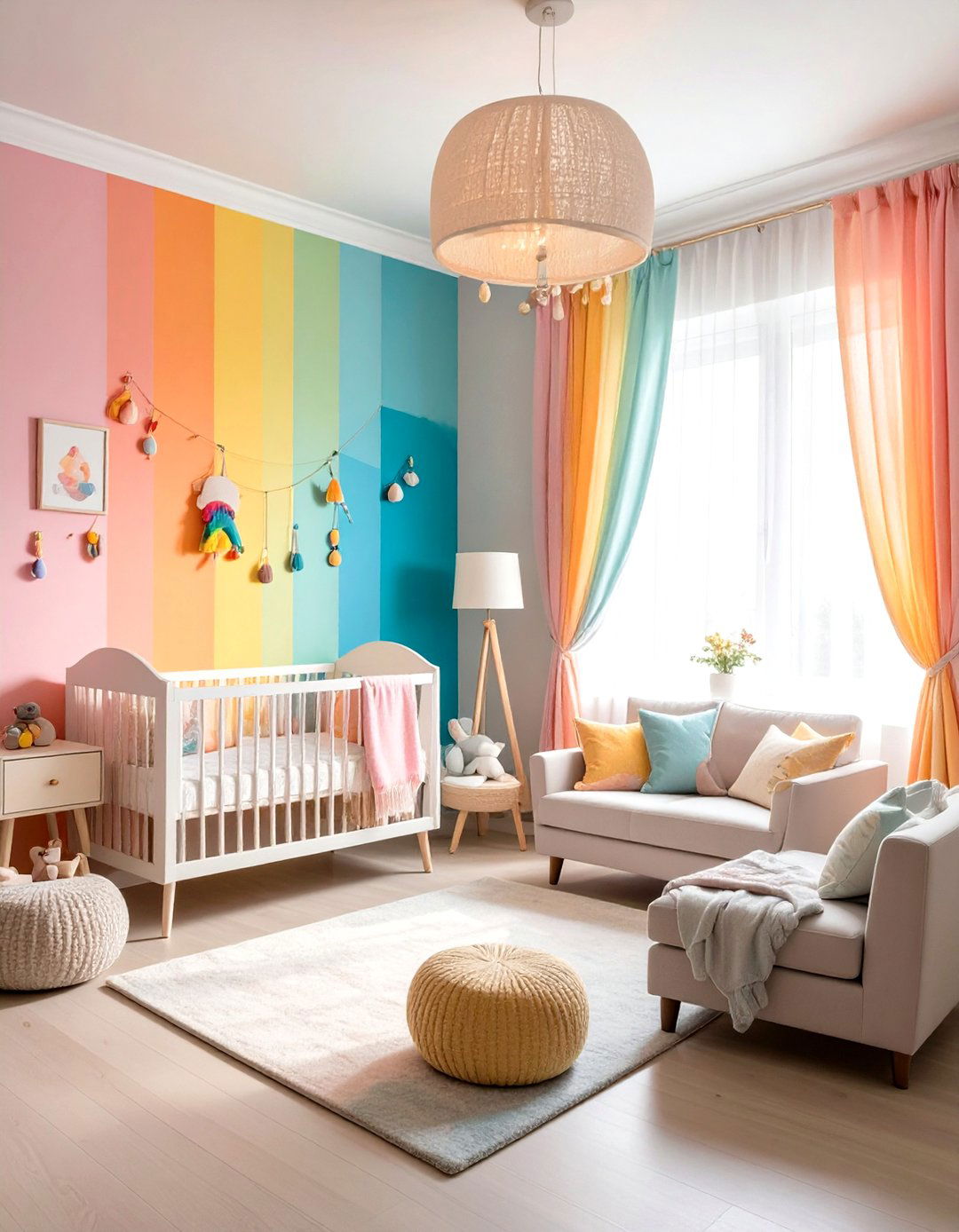
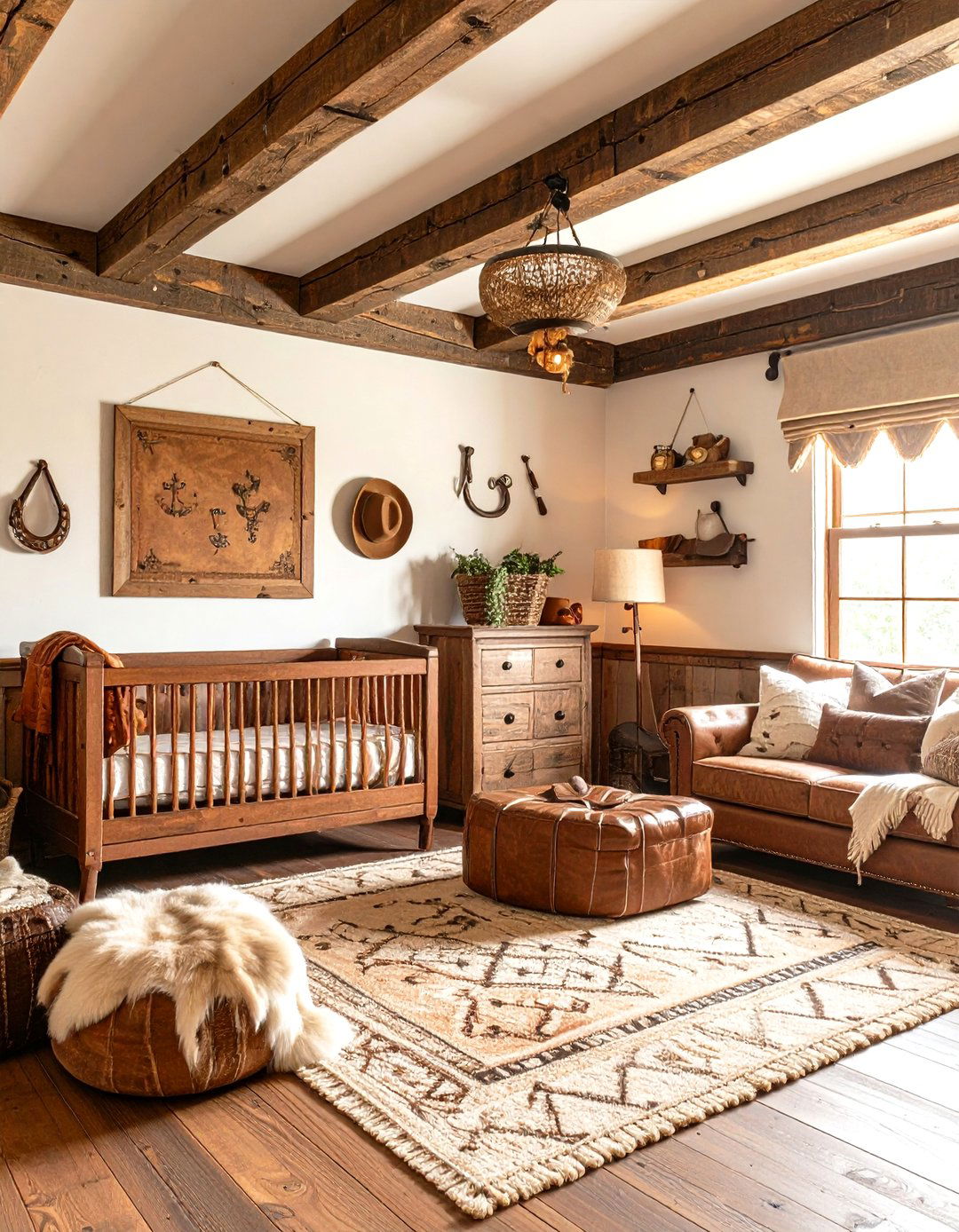
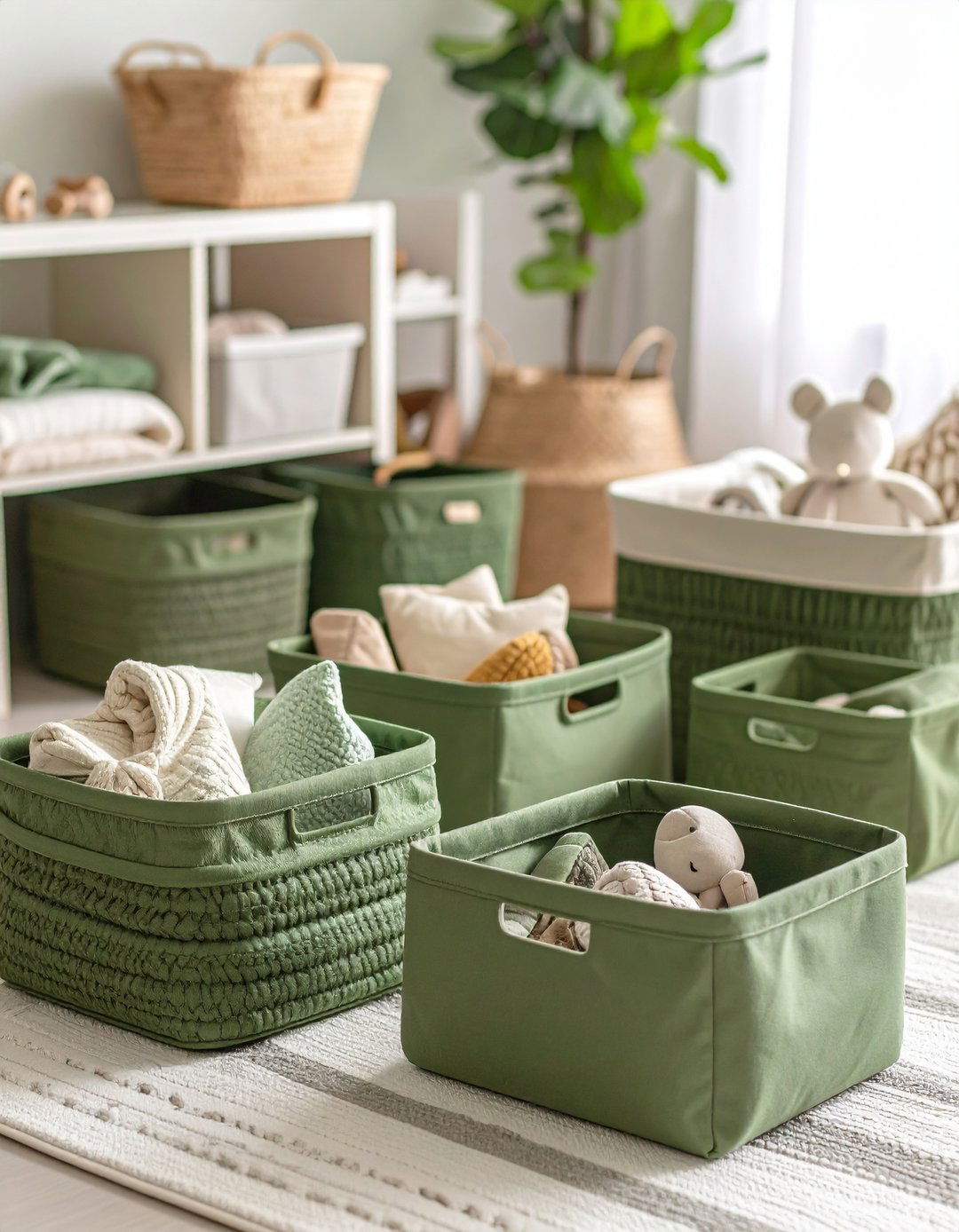
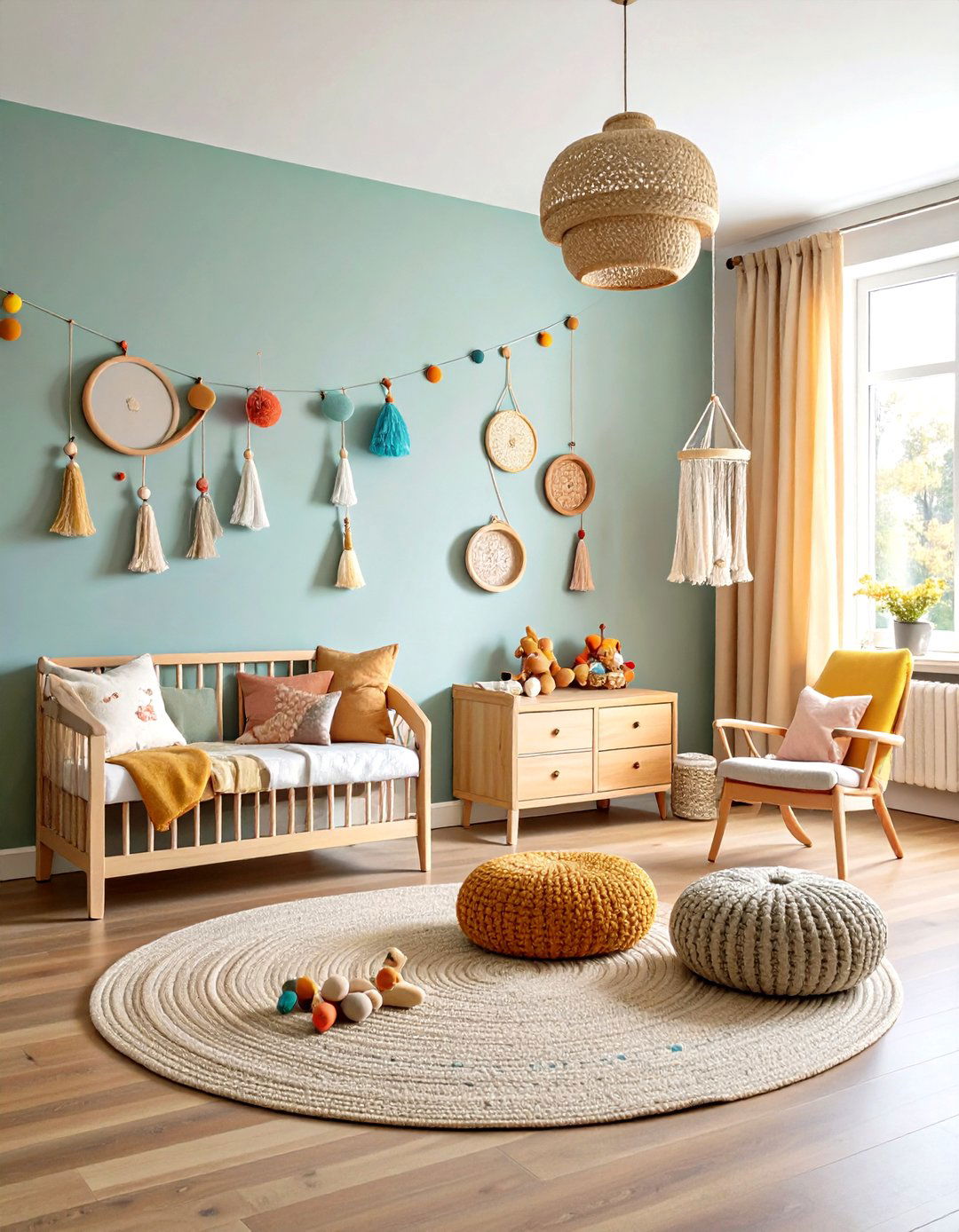
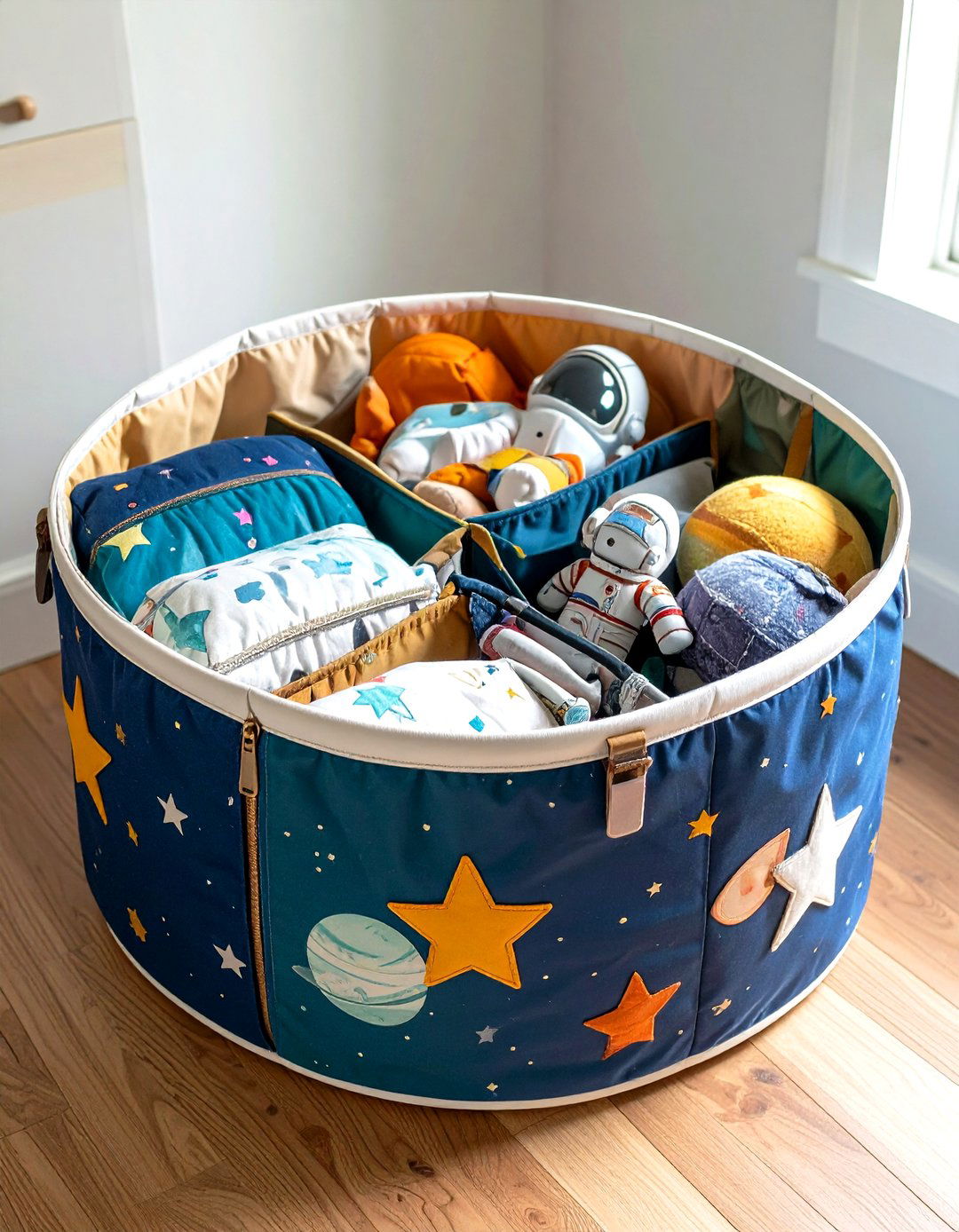
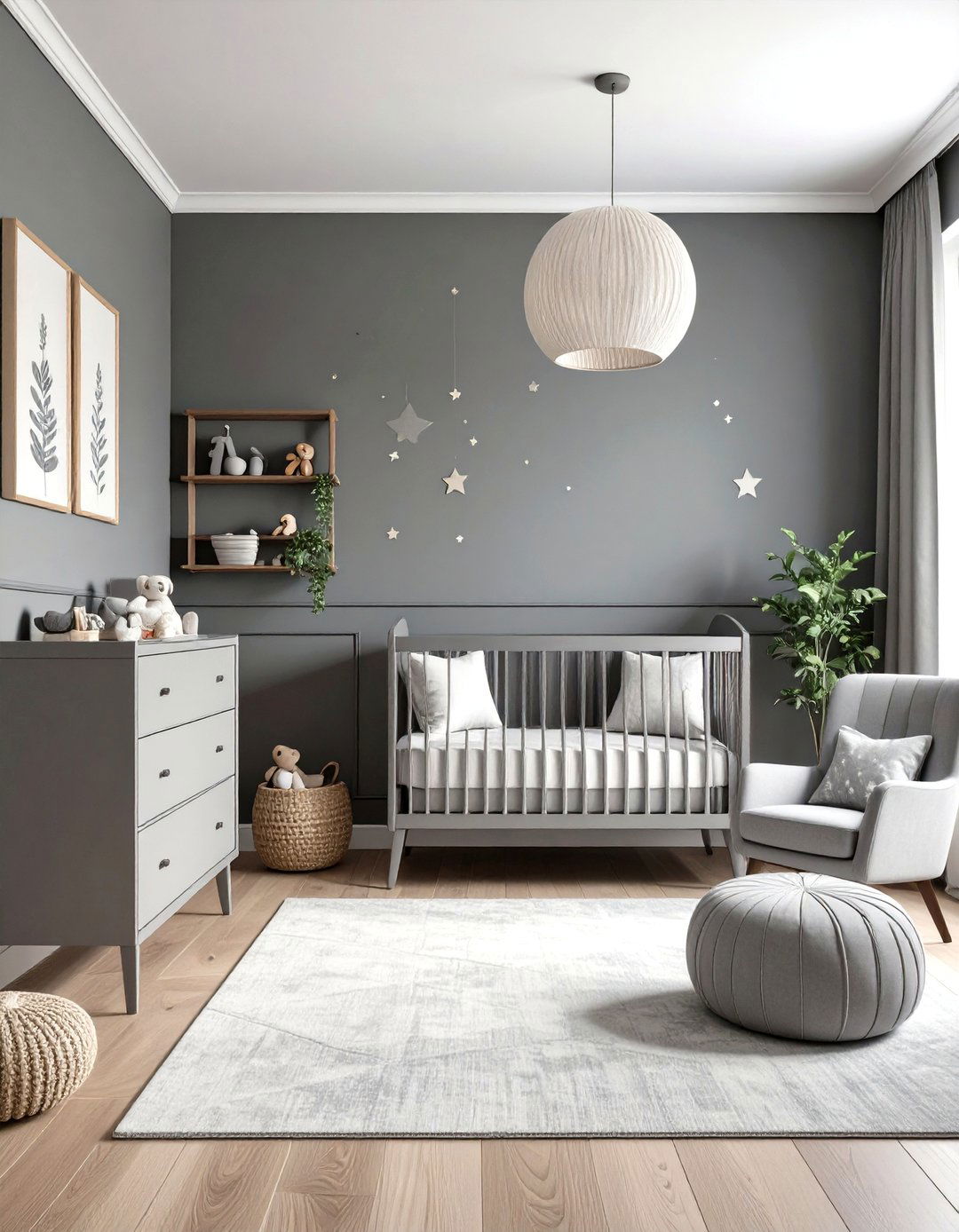
Leave a Reply